SAM
MURPHY
DESIGN
SAM
MURPHY
DESIGN
CLEARING 2023
Maintaining free care with check-ins
Improving patient engagement for Clearing's chronic pain management app
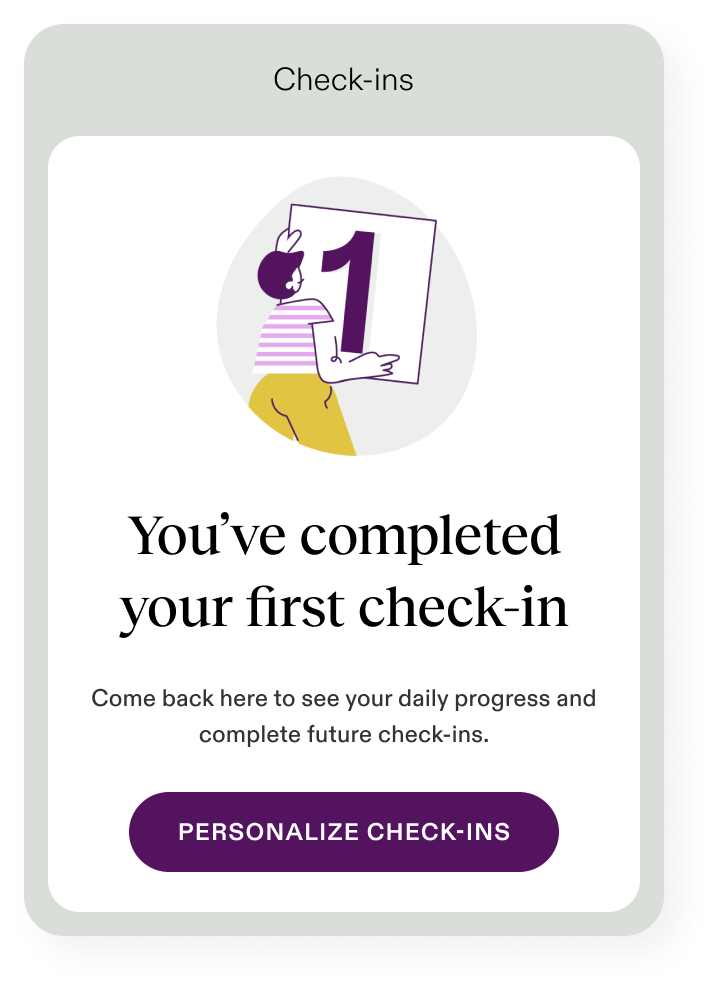
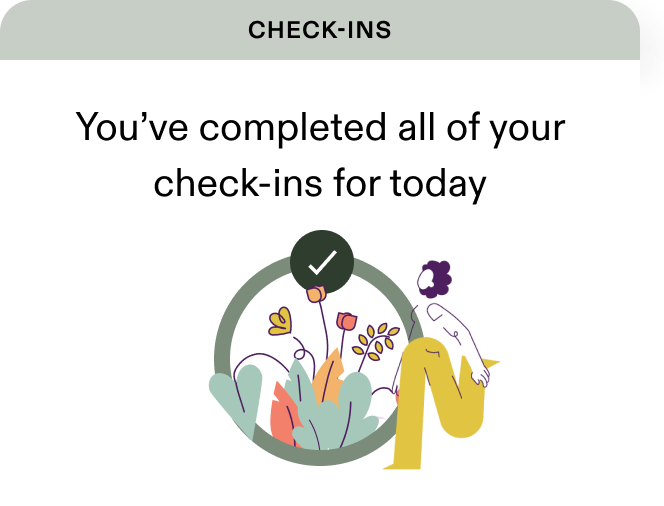
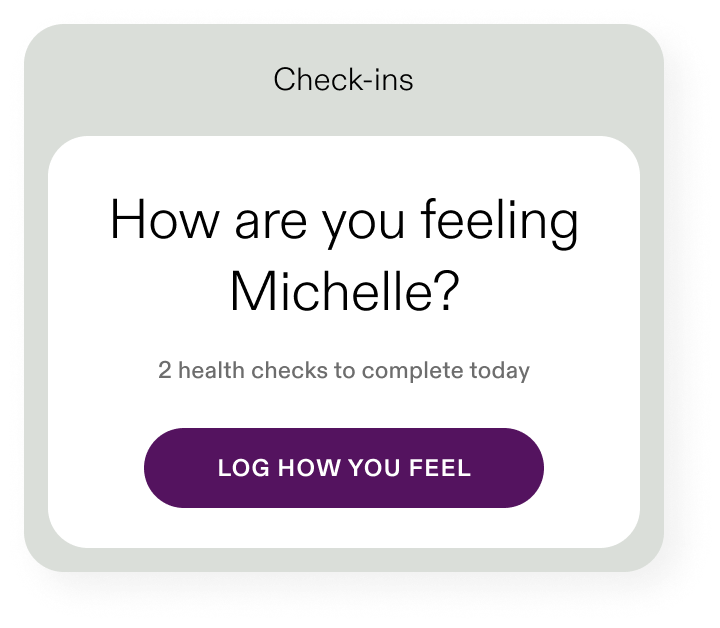
ROLE
Lead Product Designer, responsible for discovery, stakeholder collaboration, strategy, and UX.
GOAL
To help patients understand the value of tracking their pain and increase daily check-ins to 16 x per month to meet RTM goals
OUTCOME
Learned a lot about behavior change and implemented a strategy that could scale from MVP and beyond
Clearing was a chronic pain care company that helped people manage their chronic pain without opioids. The mission centered on whole-body care, helping patients through physical, psychological, and lifestyle interventions rather than pharmaceutical dependency.
The critical business challenge
Patients needed to complete at least 16 check-ins per month for us to bill insurance under Remote Therapeutic Monitoring (RTM) codes. Without RTM billing:
- The business wouldn’t be able to collect payment from insurance companies to cover care
- Patients would face subscription costs, which we knew they already couldn’t afford (check out my Continuous Care project)
- Patients could lose access to virtual pain management, when in-person options required a day-long trip
100%
Day 1
75%
Day 3
48%
Day 7
23%
Day 15
<1%
Day 30
Post app launch, engagement plummeted to 23%, yet we needed 16 check-ins from patients to offer low-cost, quality care.
We needed a solution yesterday
I came up with a flexible plan to prioritize discovery from all angles. By spreading our efforts across multiple areas and leveraging existing resources, we could adapt to time constraints while covering all bases. This approach ensured we could pivot confidently, whether we had time for direct patient feedback or needed to rely solely on existing data.
Research and competitor analysis
- How are other tracking apps promoting engagement and retention?
- What strategies seem to be working for people with chronic pain?
- What is best practice for motivating behavior change?
FullStory recordings
- What aspects of the existing UX are patients clearly struggling with?
- Are there specific mobility-related challenges in the current app?
- How effective is the current check-in prompting?
Health coach recordings
- What tools do coaches use to motivate and encourage patients face-to-face?
- What messages resonate the most?
- What challenges do patients commonly face in their care journey?
Patient interviews (time-dependent)
- What motivates patients to engage with their care plan?
- What barriers do they face in consistent app usage?
- How do they perceive the value of daily check-ins?
Key research findings
Combined efforts see more success
Every habit-tracking app I analyzed used a combination of engagement techniques. I quickly realized that we would need to create multiple touch-points to keep patients engaged from the start:
- Goal setting
- Educational moments
- Data visualization
- Affirmations
- Guided exercises
- Streaks
- Rewards
- Smart reminders
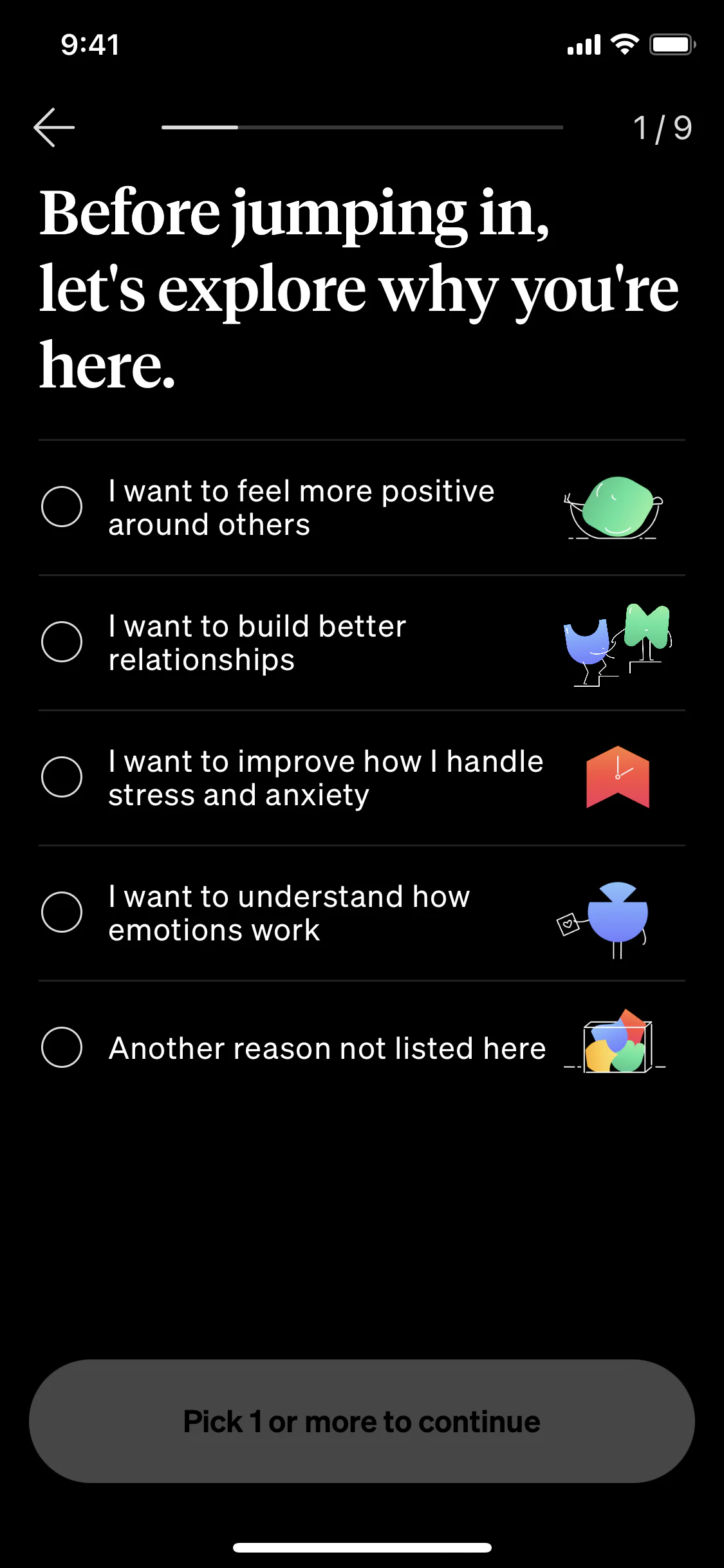
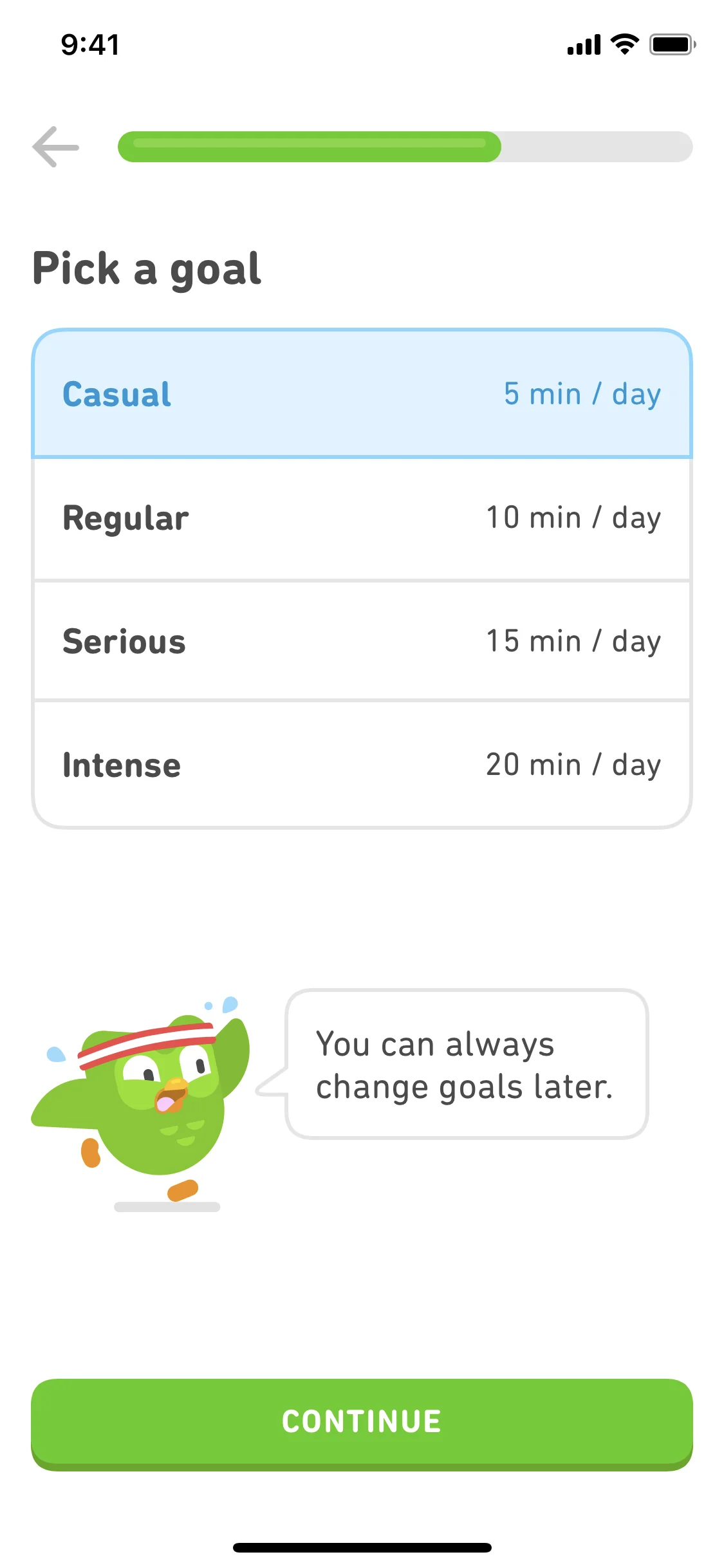
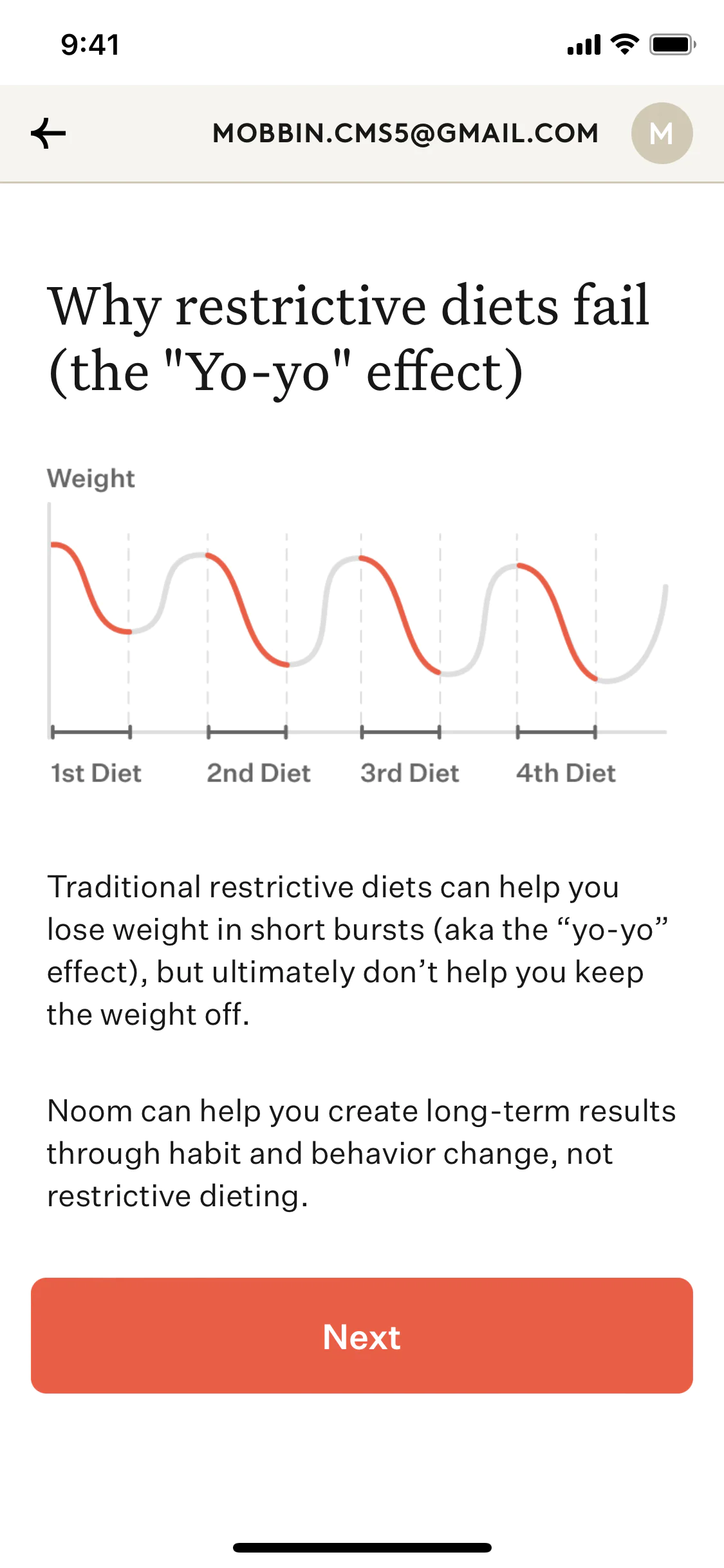
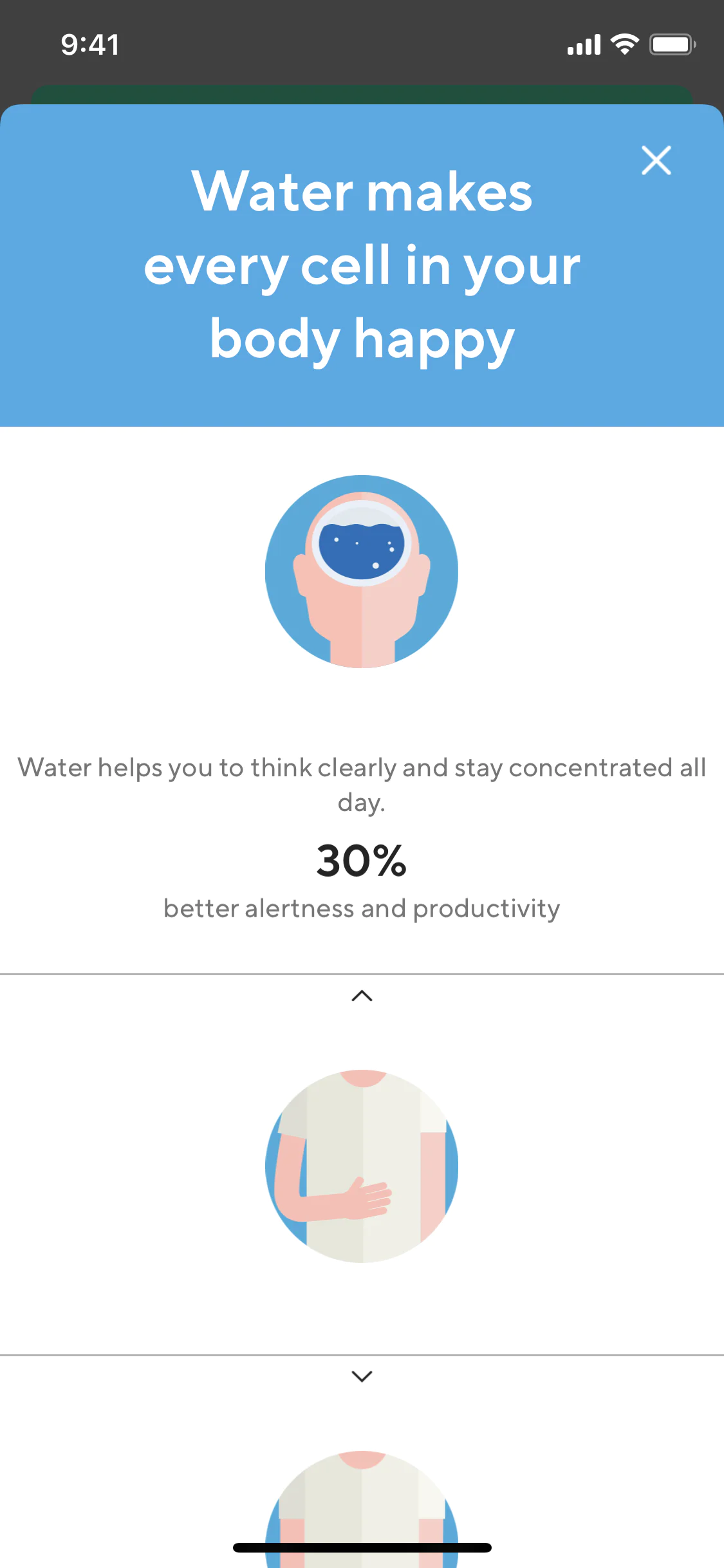
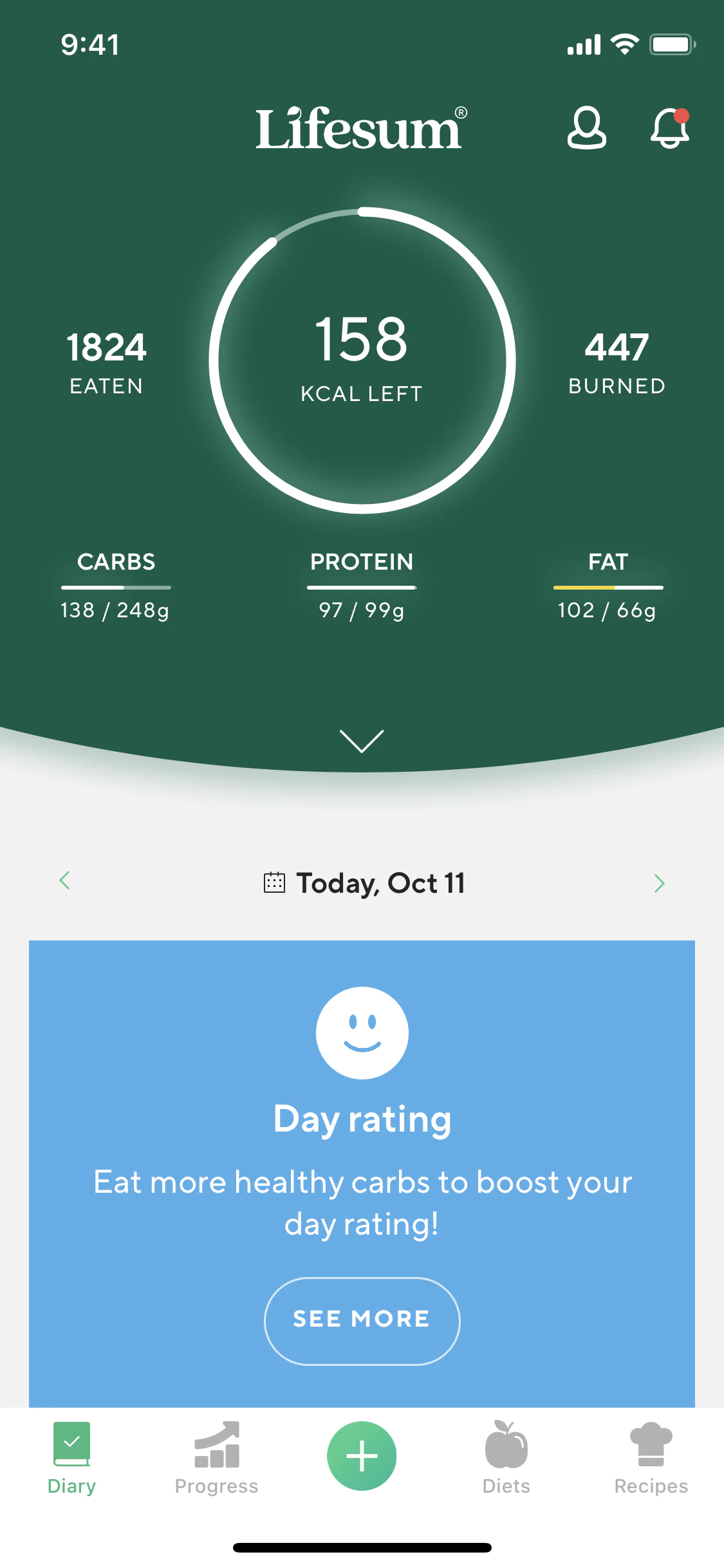
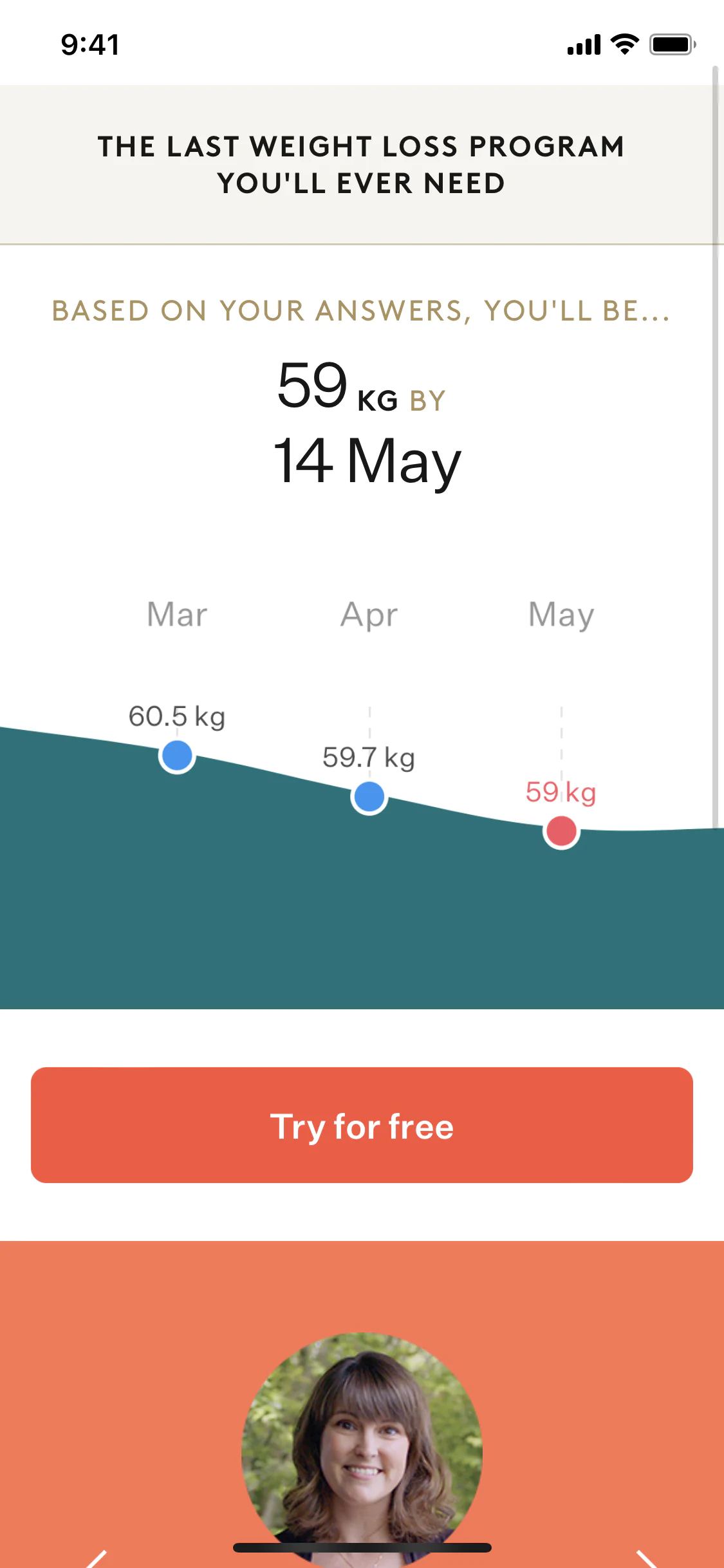
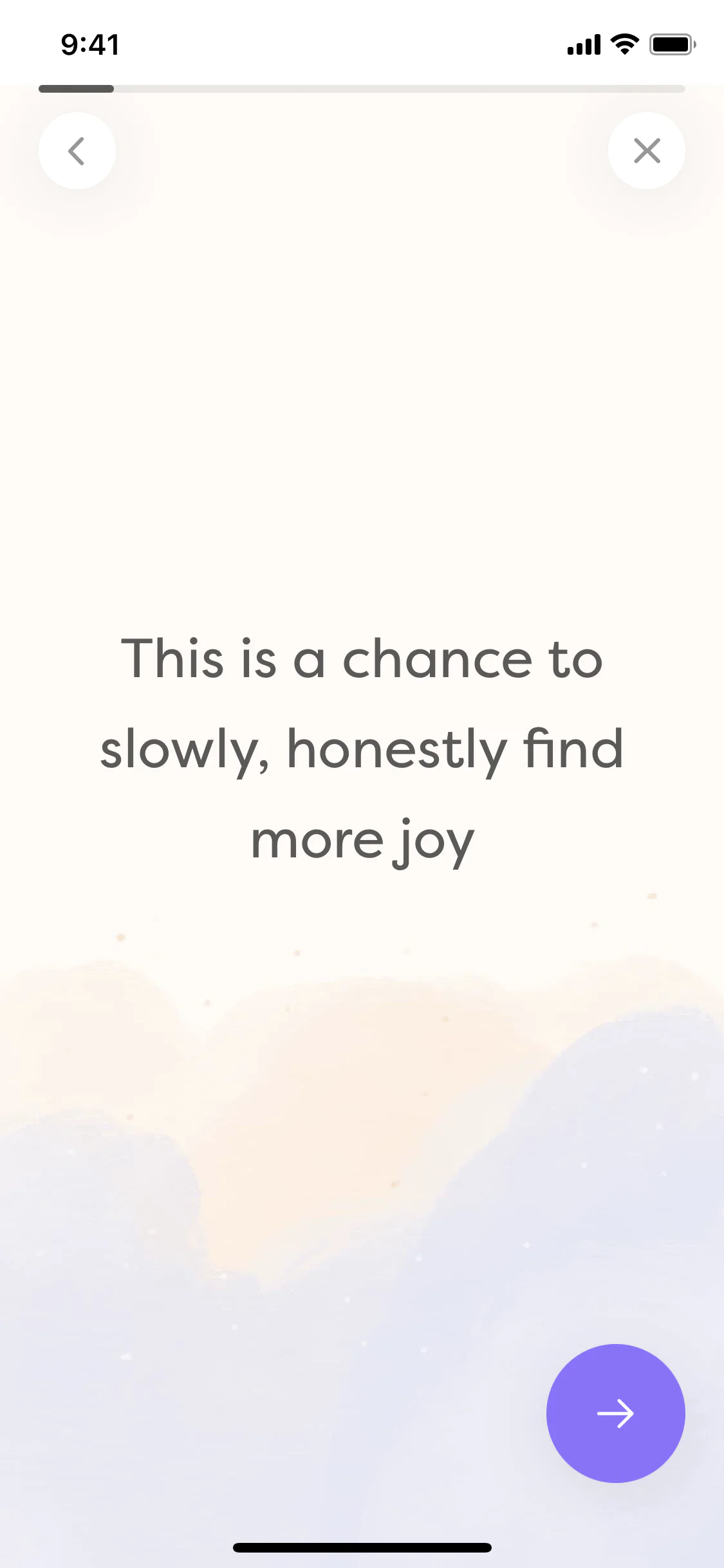
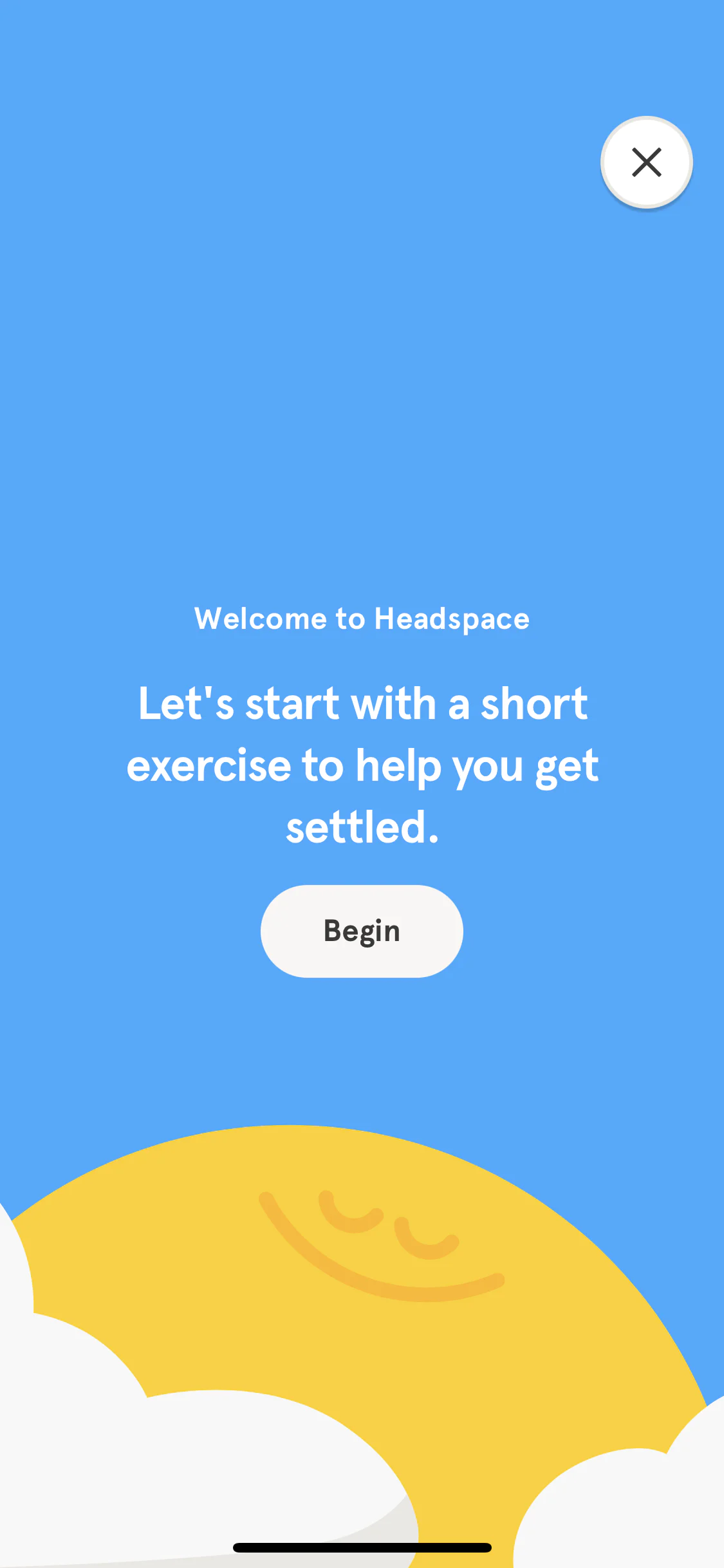
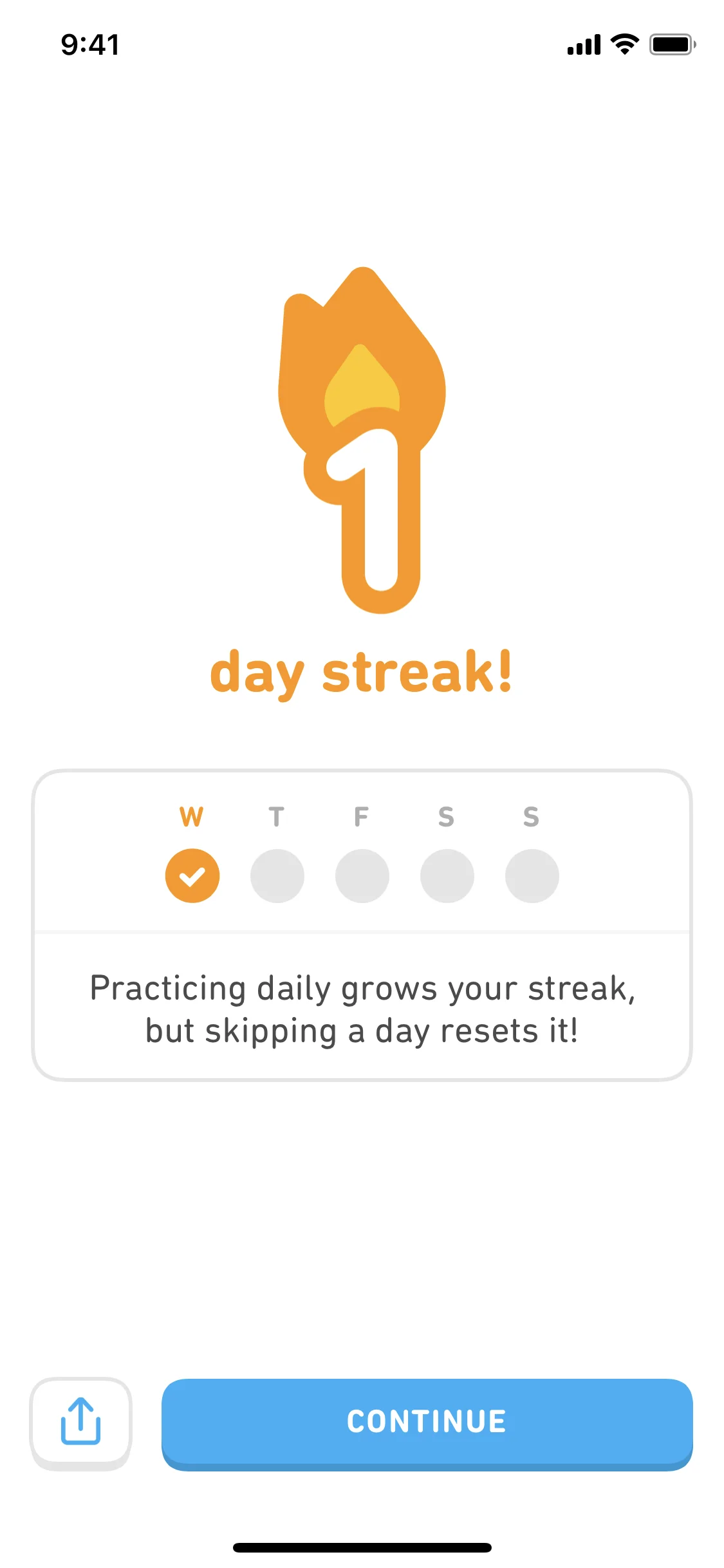
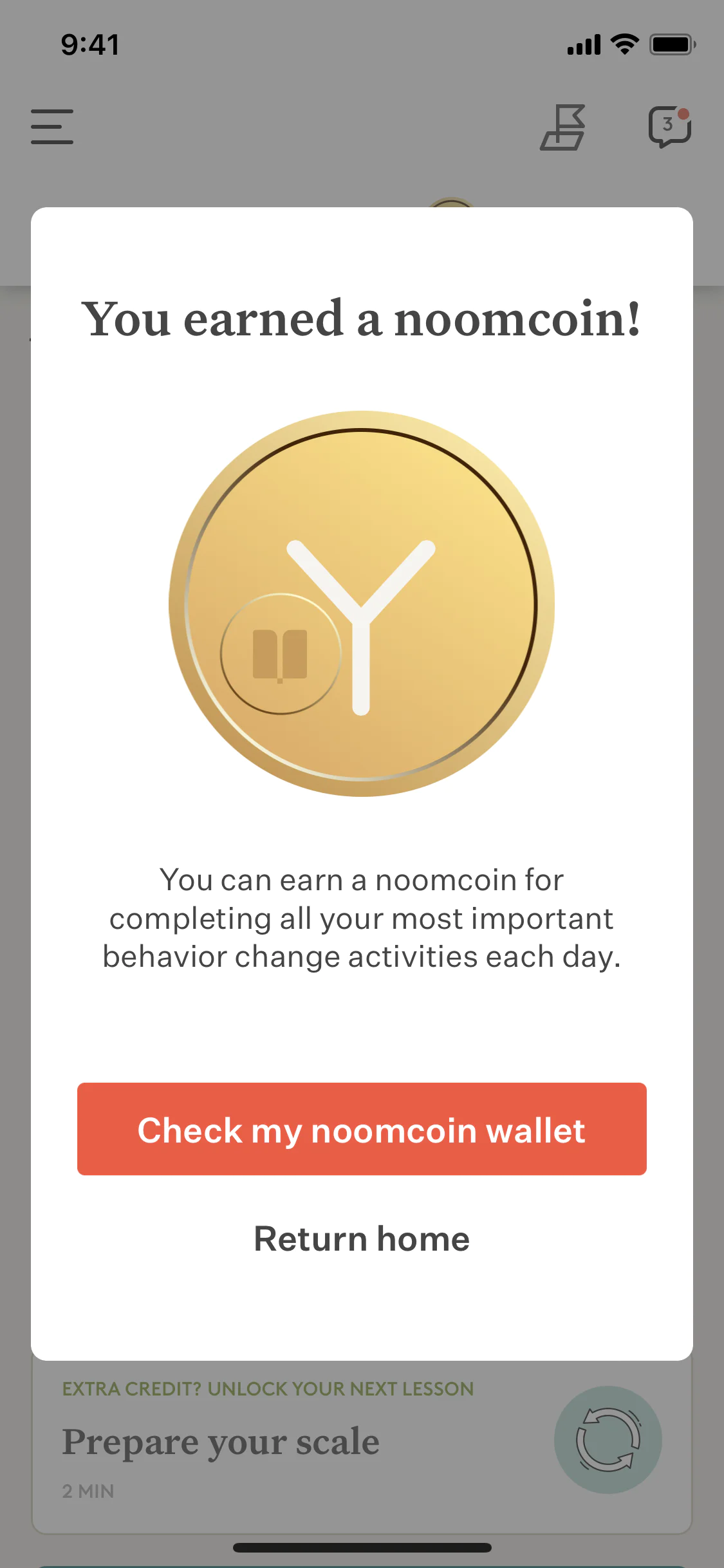
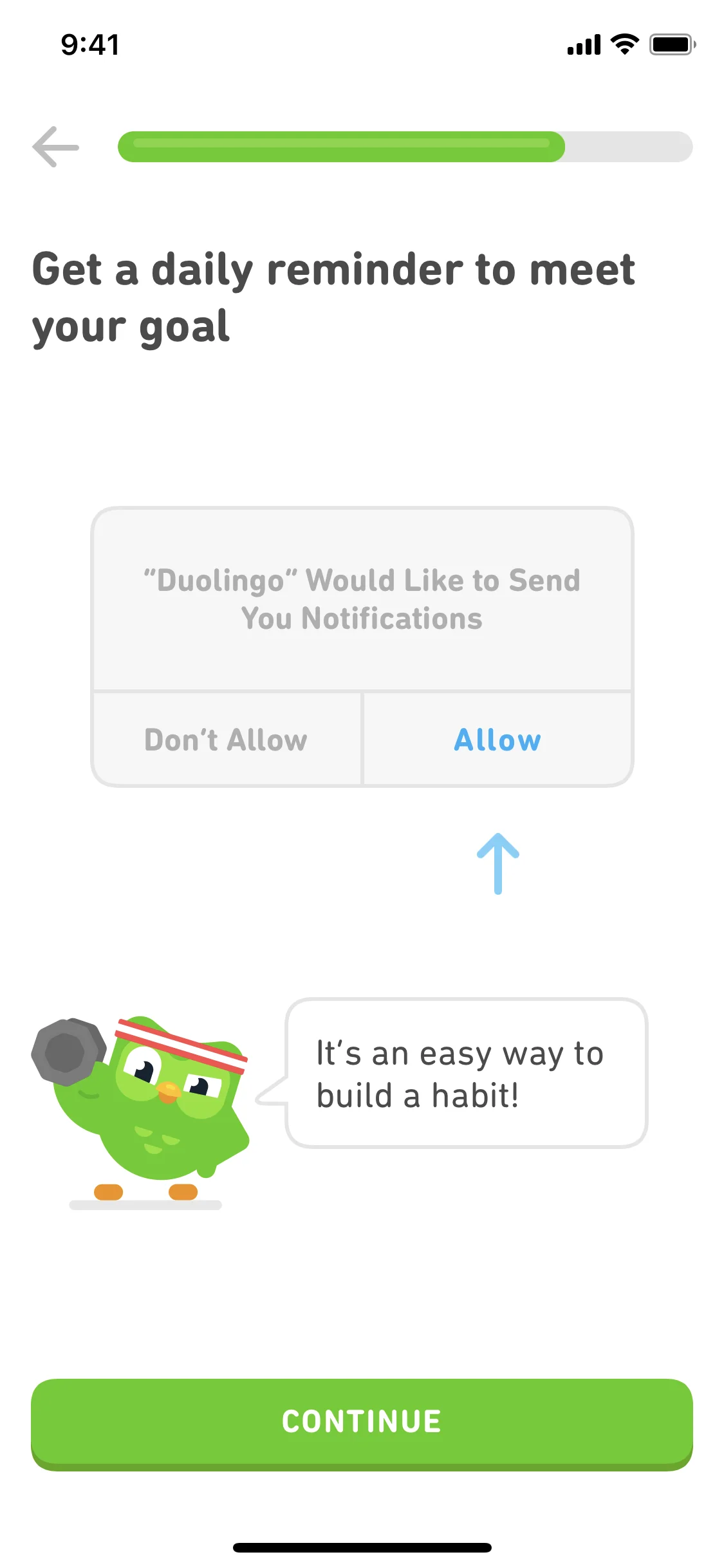
Habit-tracking apps I looked at during my competitive audit
Which efforts would work best for our audience?
I looked to our Facebook community to understand how they were coping and motivating each other. There was an overwhelming response around three themes:
Positive affirmations
I am here feeling the same. You are not alone. I try to smile and make one happy moment each day. Something to think about besides
pain. You’re right many do not understand. That’s ok. We do
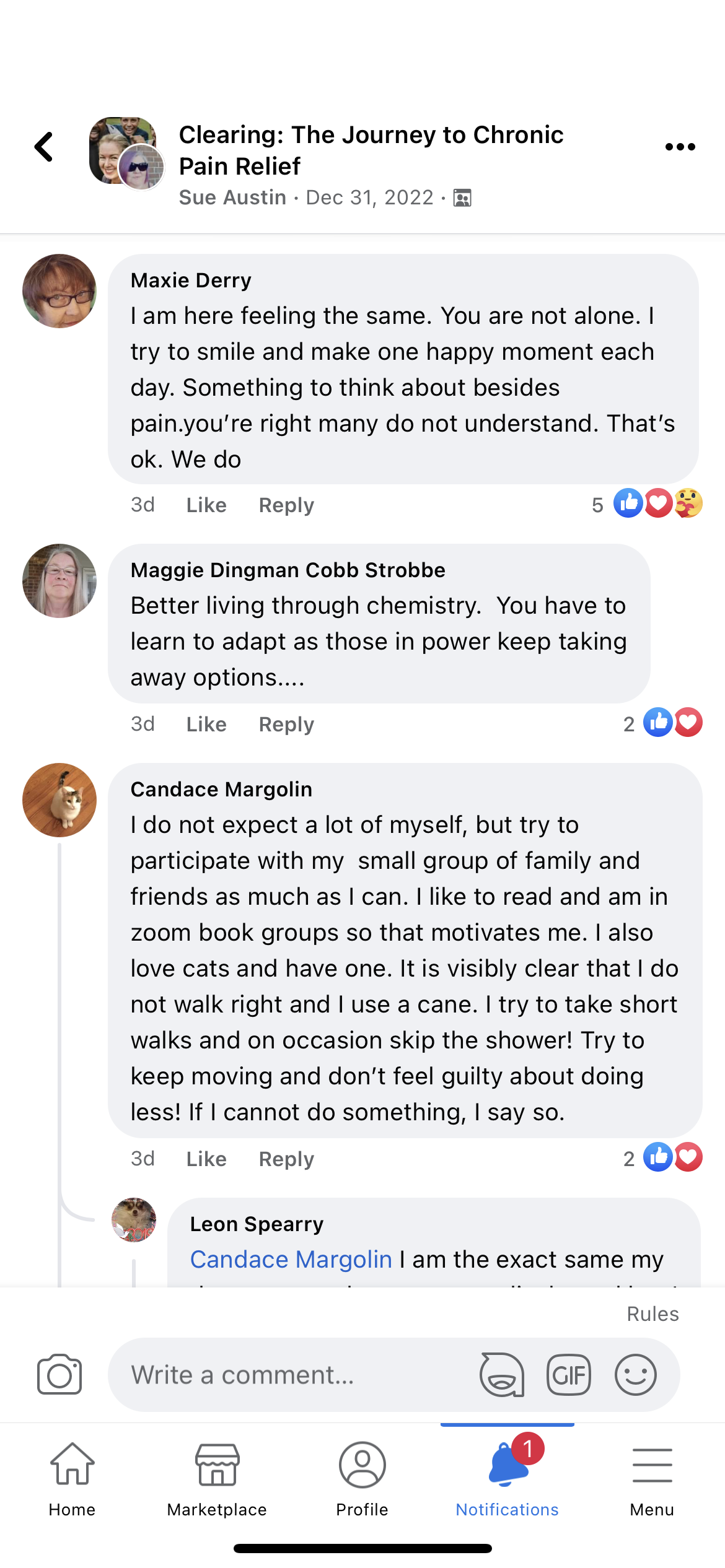
All you can do is take on hour at a time you’re gonna have to slow up there’s no other way.
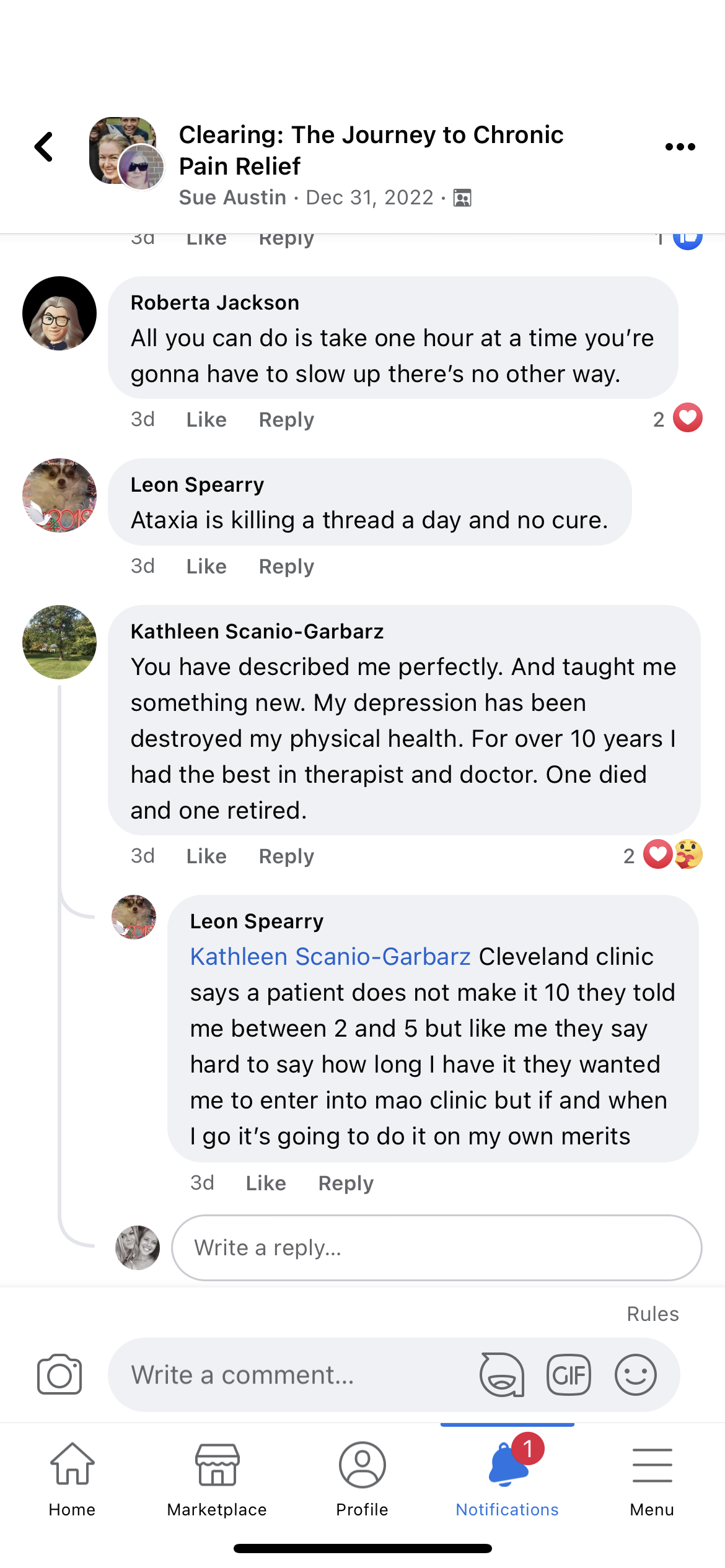
wake up everyday with a reason to get up and have basic things you can do, if you can do more than it’s been a blessed day. no one your body like you do.

Setting small goals
I know the feeling. I’m full body RSD for 20 years. It kills us mentally some days. Remember though that you are a warrior. 🧡🧡
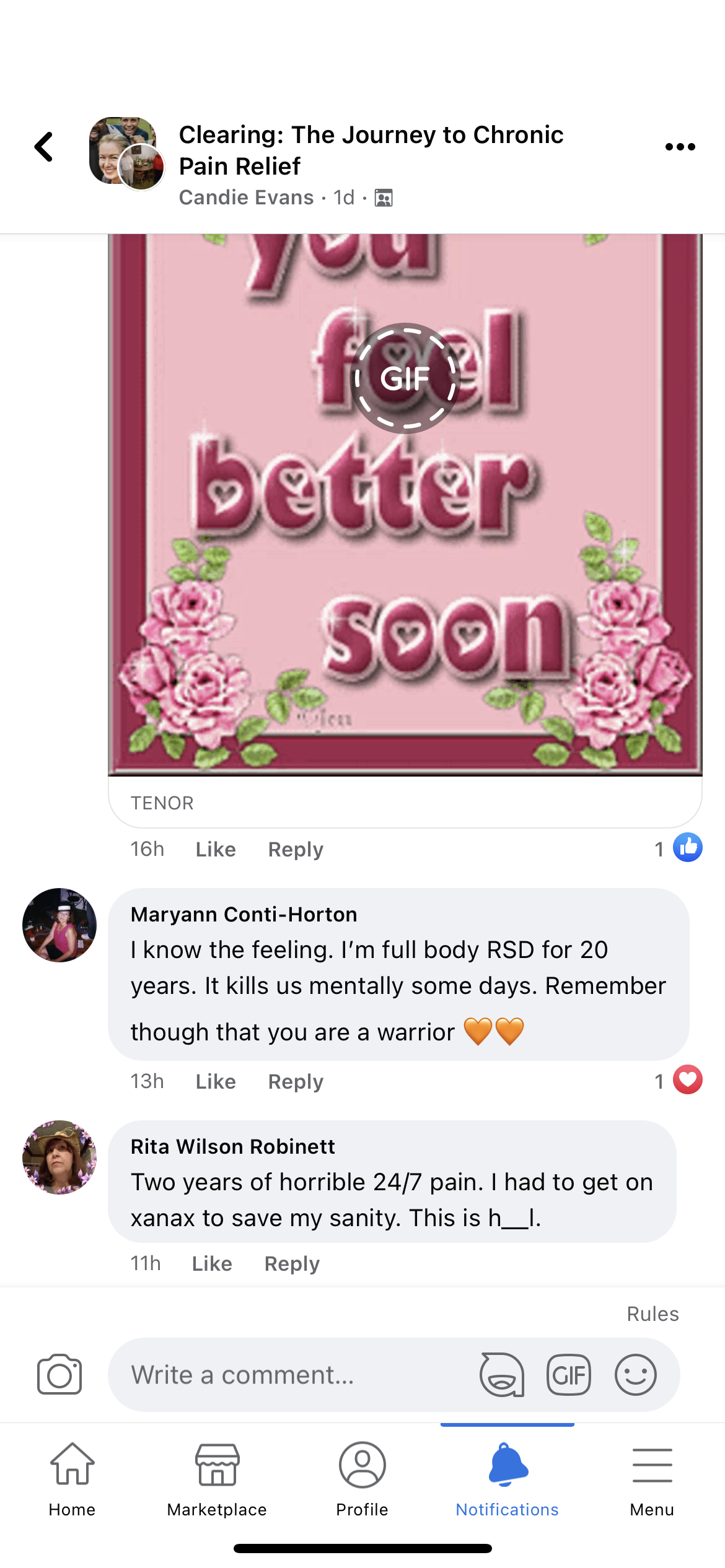
I do not expect a lot of myself, but try to participate with my small group of family and friends as much as I can. I like to read and am in zoom book groups so that motivates me. I also love cats and have one. It is visibly clear that I do
not walk right and I use a cane. I try to take short walks and on occasion skip the shower! Try to keep moving and don’t feel guilt about doing less! If I cannot do something, I say so.

Hugs sweetheart you are not a lone. One day at a time!!! You are beautiful
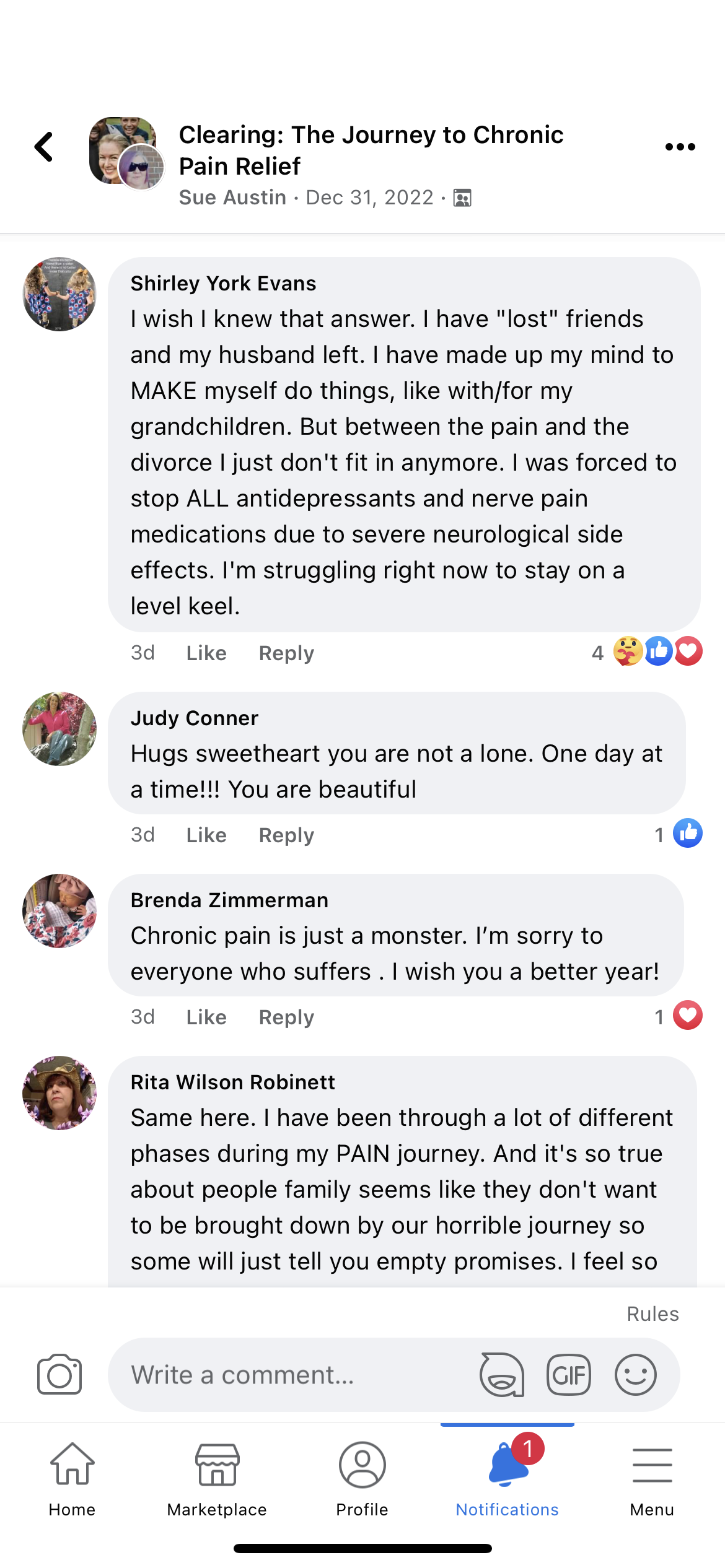
Celebrating wins
I am coming to terms with the fact that I cannot DO much for them but I am not a human doing, I am a human being and sometimes my being there, (often right where they left me) is so much more for them. I am accessible, strong because of my journey and have a different perspective on the world. You keep up the good fight because you
have no choice my dear. You are not a shell, you are a whole person with much more depth and wisdom than before. You do as much as you can and rest is a requirement not a defeat. Be kind to yourself, be patient, loving and celebrate the
smallest of victories. I am learning to live with this broke down body that has served me well, and not be ashamed. That’s a tough one for me. Prayers for you and me and all of us!

I was in awe of the compassion and connection among the people in this community. These were people that “got it” when no one else did. I knew we couldn’t copy/paste these same tactics though.
Clearing’s health coaches confirmed our emerging patterns
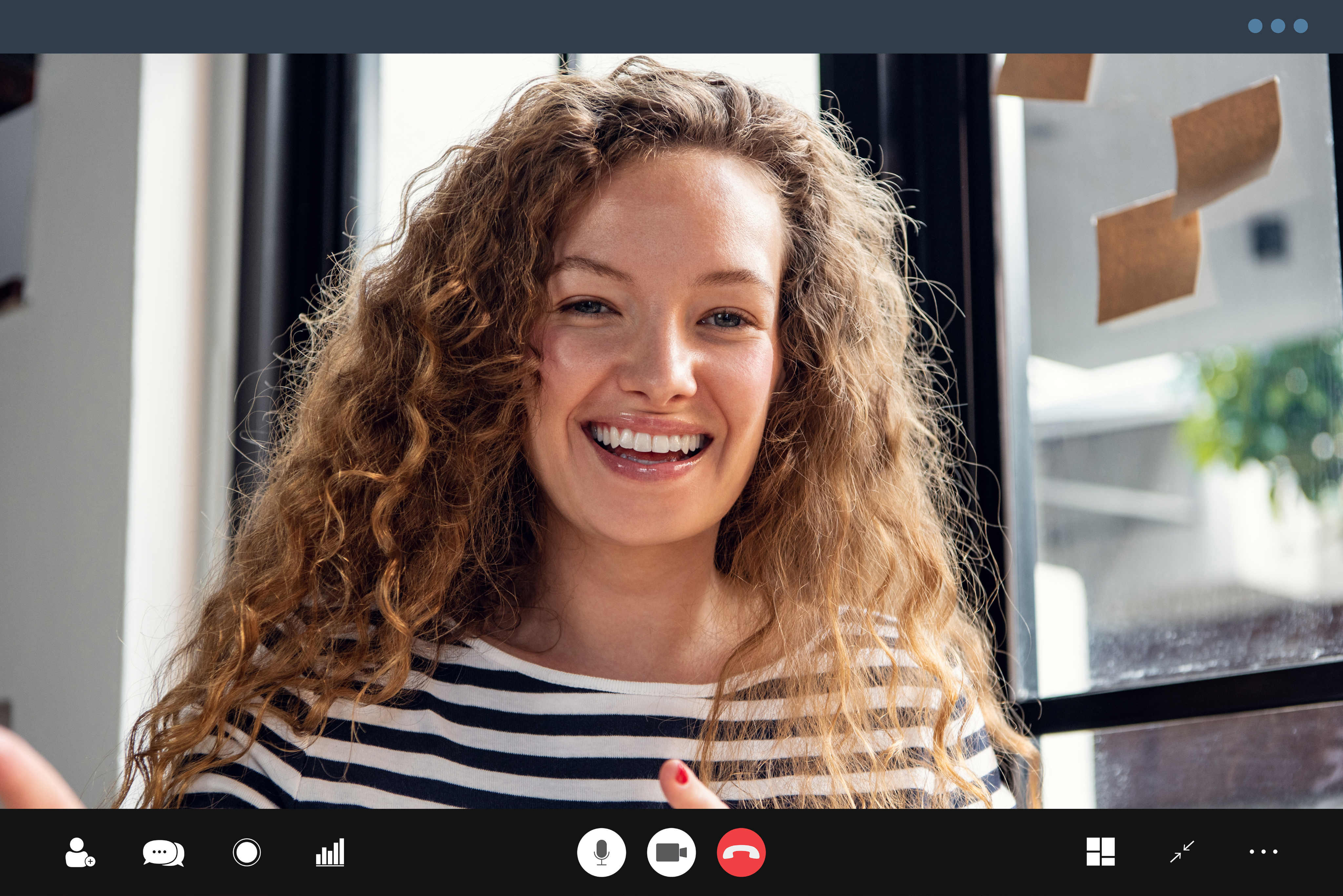
Research and competitor analysis
The existing app sent a daily reminder at the same time each day. However, if patients opened the app earlier, they’d have no way of accessing Check-ins inside the app.
Patients didn’t see the value
The existing app lacked progress feedback, leaving patient inputs invalidated. However, coaches were already getting positive feedback from patients on the insights, advice, and encouragement they provided in sessions.
Patients were not on their phone often
Patients shared that they often left their phone in another room or only checked them occasionally, making it easy to miss time-sensitive notifications.
Patients could commit to small goals
Coaches motivated patients by having them commit to a small goal, of their choosing, each month. This empowered patients, making them feel in control and more dedicated as they were working towards their own goal.
My design strategy
Behavior is powerfully influenced by our emotions, identity, and environment, as well as how options are presented to us.
Align incentives with behavior
If we wanted patients to check in more, we needed to give them a reason to come back. They’d bounced between dismissive doctors and pushed into dangerous treatments.
Patients were understandably skeptical of every new approach. They needed to see real progress to believe in something.
The design challenge: Progress with chronic pain is slow and full of ups and downs. How could I create an experience that motivated them to engage while we gathered data to show longer term progress?
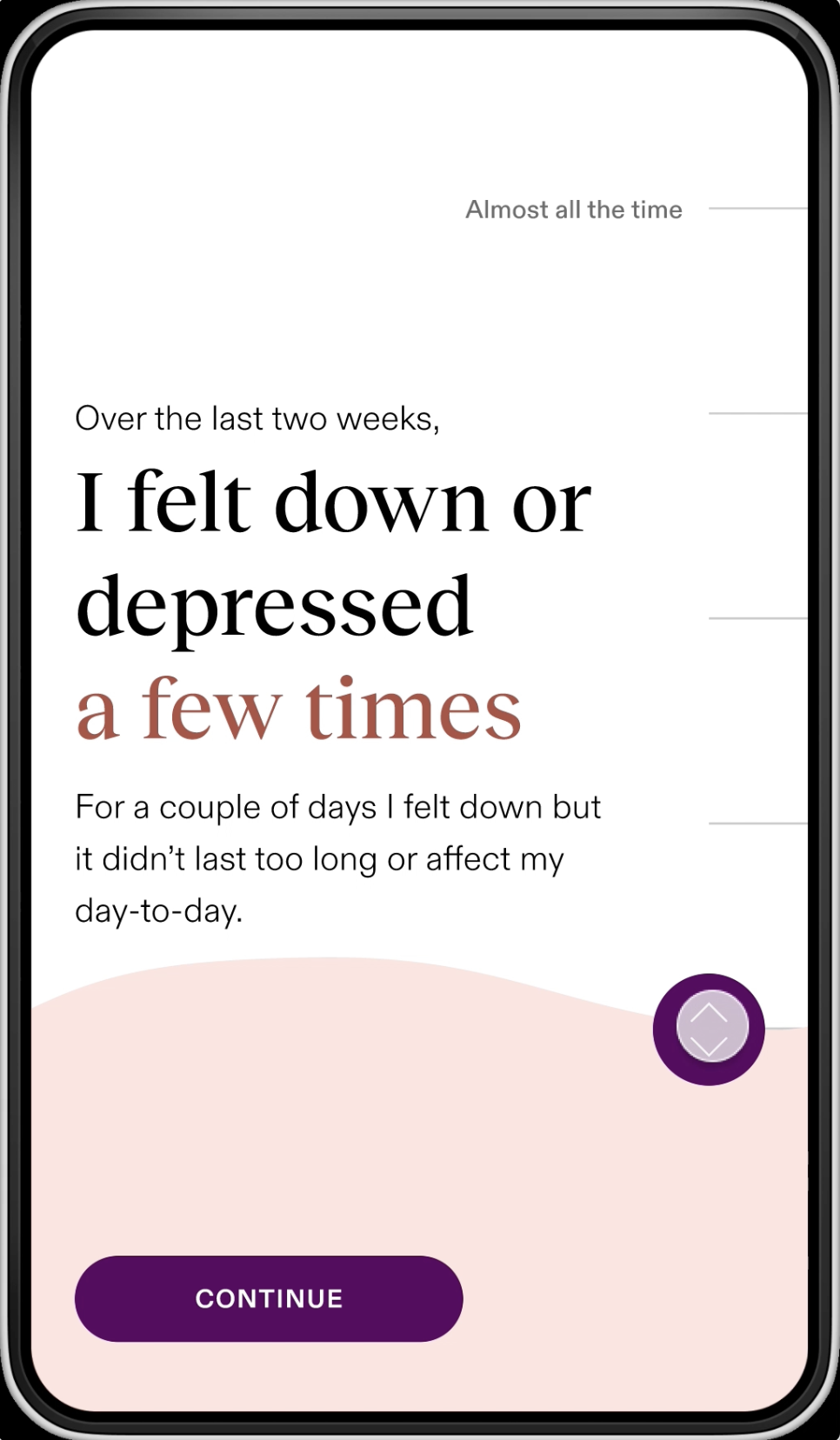
One of three check-ins prompted to users
Planning our MVP approach
Based on discovery, I proposed an MVP solution centered on three key aspects: feedback, discoverability, and understanding. This would not only set our patients up for success but also lay the groundwork for future feature enhancements.
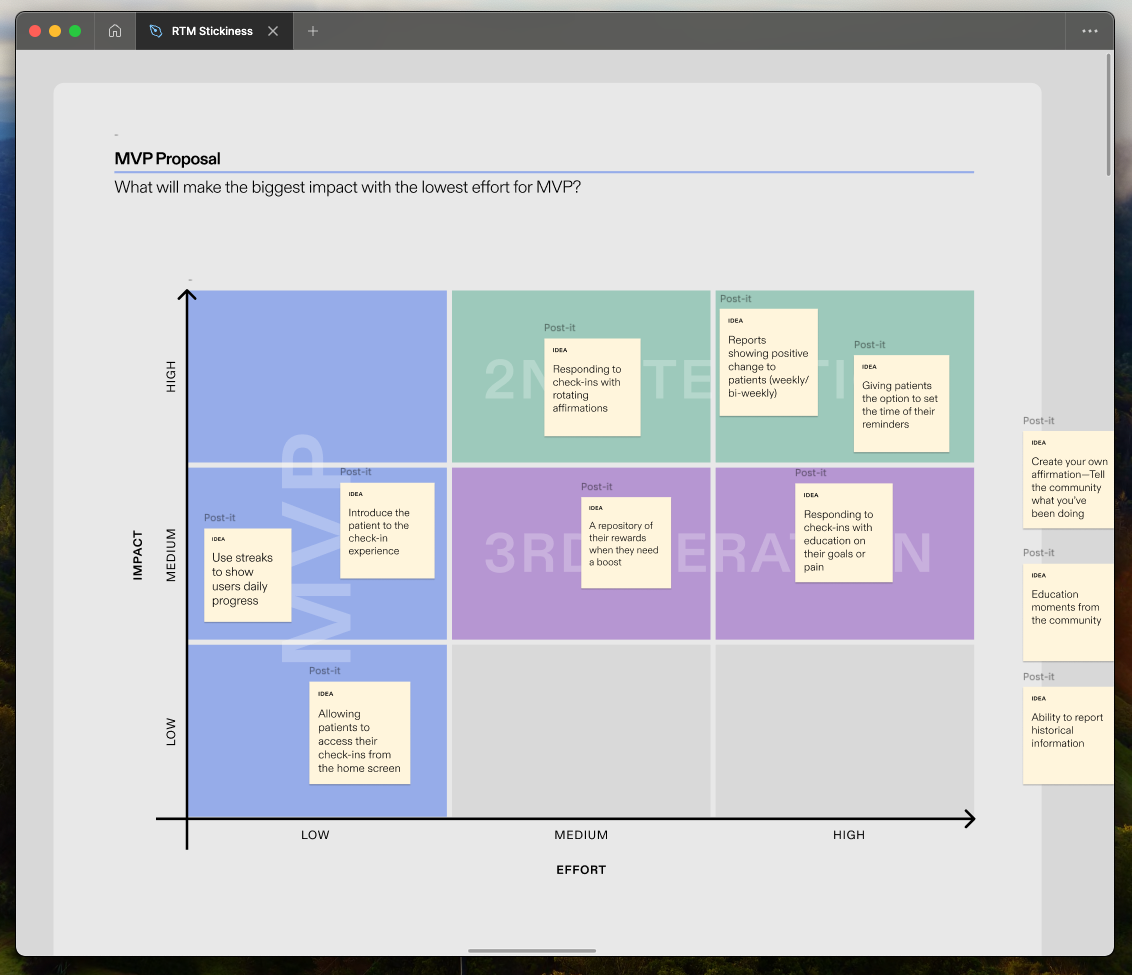
Next, I collaborated with my PM to come up with a user journey that focused on the three tactics we agreed upon with stakeholders.
1
Home screen
Featuring Check-ins on the home screen would improve their discoverability and allow users to access them on their own time
2
Daily progress
Implementing a streak-based system to visually represent consistency would motivate patients by highlighting their dedication to their goals
3
Intro experience
Guiding patients through their first Check-in and providing context would demonstrate value and encourage engagement

3
2
1
Solving discoverability on the home screen
Key questions I addressed
- The existing home screen was organized with the most important action at the top: scheduling doctor/coach visits. But once a patient completed that task, did the module still need to sit at the top? Could it collapse?
- How did Check-ins rank against the other daily tasks? How did they rank against the rest of the info on the screen?
- The existing daily care program consisted of tasks patients needed to complete. Did it make more sense for Check-ins to live within their daily care program or on their own?
Original home screen doctor module
I created a dynamic module that would adapt based on status. While this would deviate from our existing checklist framework, it offered the flexibility we needed.
Module design considerations
- Always-on: The module would act as a 'nudge' that would help improve discoverability
- More real-estate: A module provided more space to utilize behavior change tools like streaks and affirmations
- Changing learned behavior: While this shifted behavior away from the established daily care program, the critical business need for RTM compliance justified giving check-ins greater visual prominence and hierarchy
My decision to shift from traditional progress tracking to a celebration-focused design came from a critical user insight — our patients didn't need reminders of what they missed when some days, they couldn't even get out of bed.
Positive motivation through daily progress
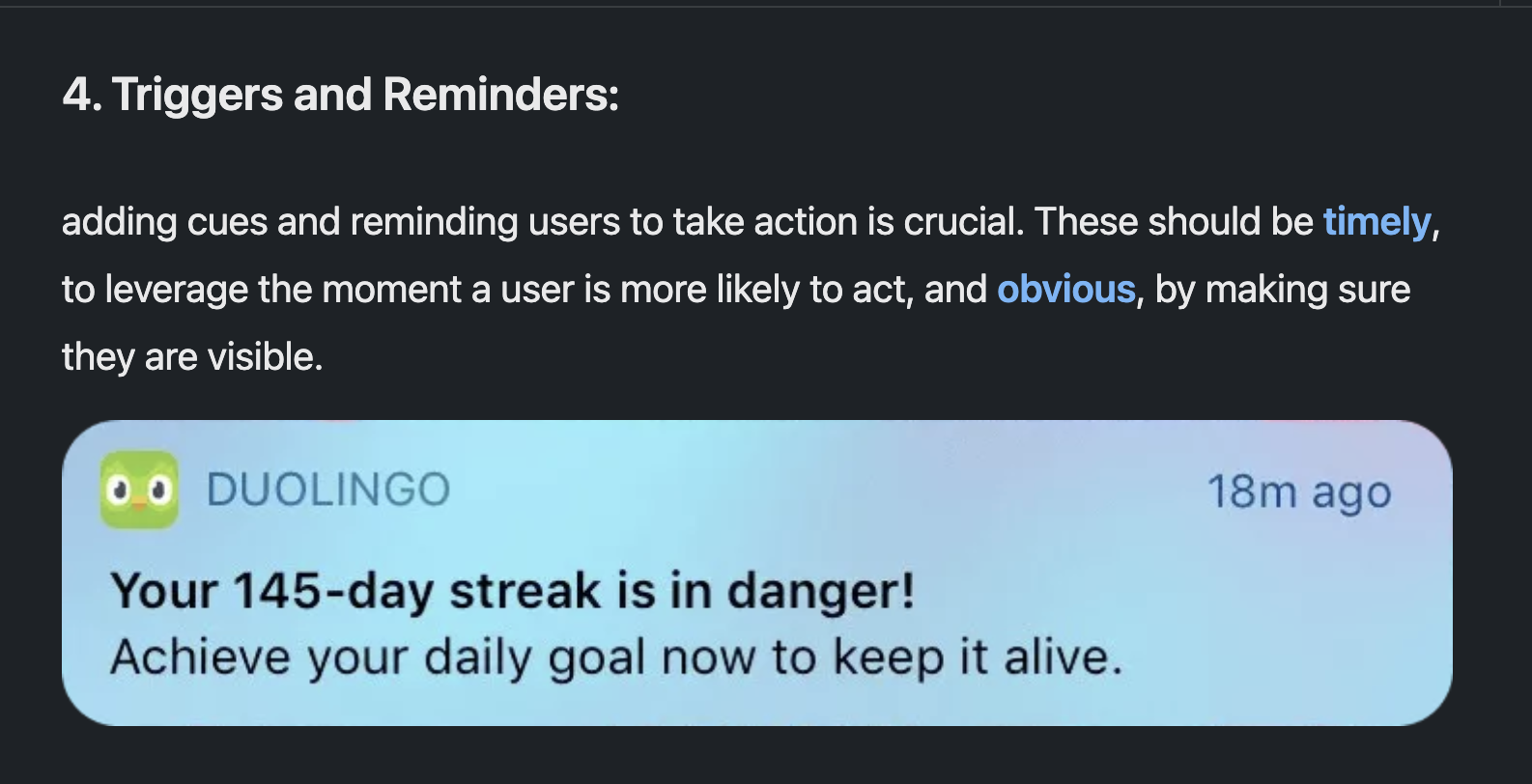
Duolingo was the first app I (and many coworkers) thought of for habit-building. But the more I dug into the psychology behind streaks, I realized they might do more harm than good for our patients.
Unlike a language learning app where small guilt trips can be motivating, people in chronic pain were dealing with:
- Physical limitations that varied day-to-day
- Pain flare-ups and emotional challenges that affected their ability to engage
- Medical appointments that disrupted routines
This led me to reimagine streaks, focusing solely on positive reinforcement rather than loss aversion. Our system would:
Celebrate all days of engagement in a week
Focus on progress, not perfection
Never penalize missed days
Acknowledge the realities of chronic pain
Building trust through an intro experience
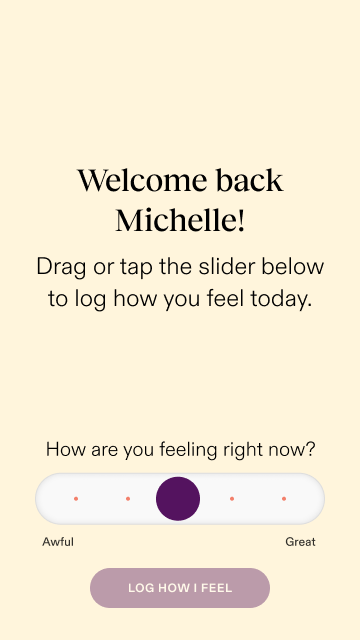
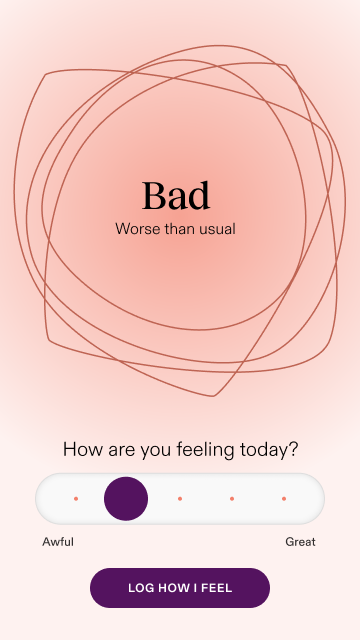
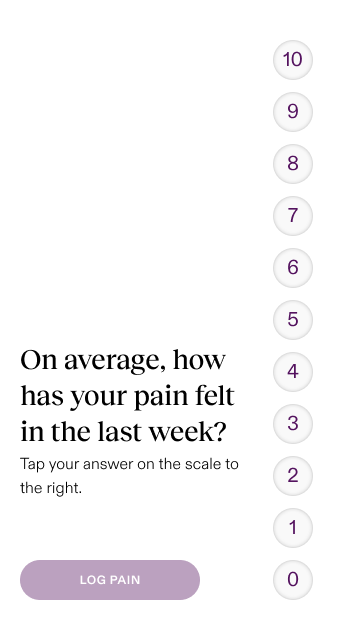
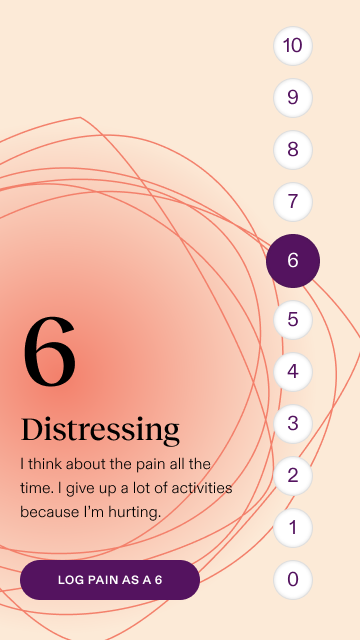
Patients were prompted with the existing Check-in experience when they opened the app
Unlike other features in our app, Check-ins lacked an introduction. Patients weren't clear on why we were asking for this information or how it would benefit them. We needed to create an onboarding experience that would clearly establish trust, demonstrate value, and help users personalize the feature to their needs.
User research revealed that patients trusted something scientifically proven, even without understanding the complex details. Rather than going into detailed explanations of the three clinical scales (GAD, PHQ, and PGIC) we used for Check-ins, I proposed leveraging our CMO, Dr. Jacob instead, who was already trusted by our patient community.
Wireframe explorations
Show clinical validation
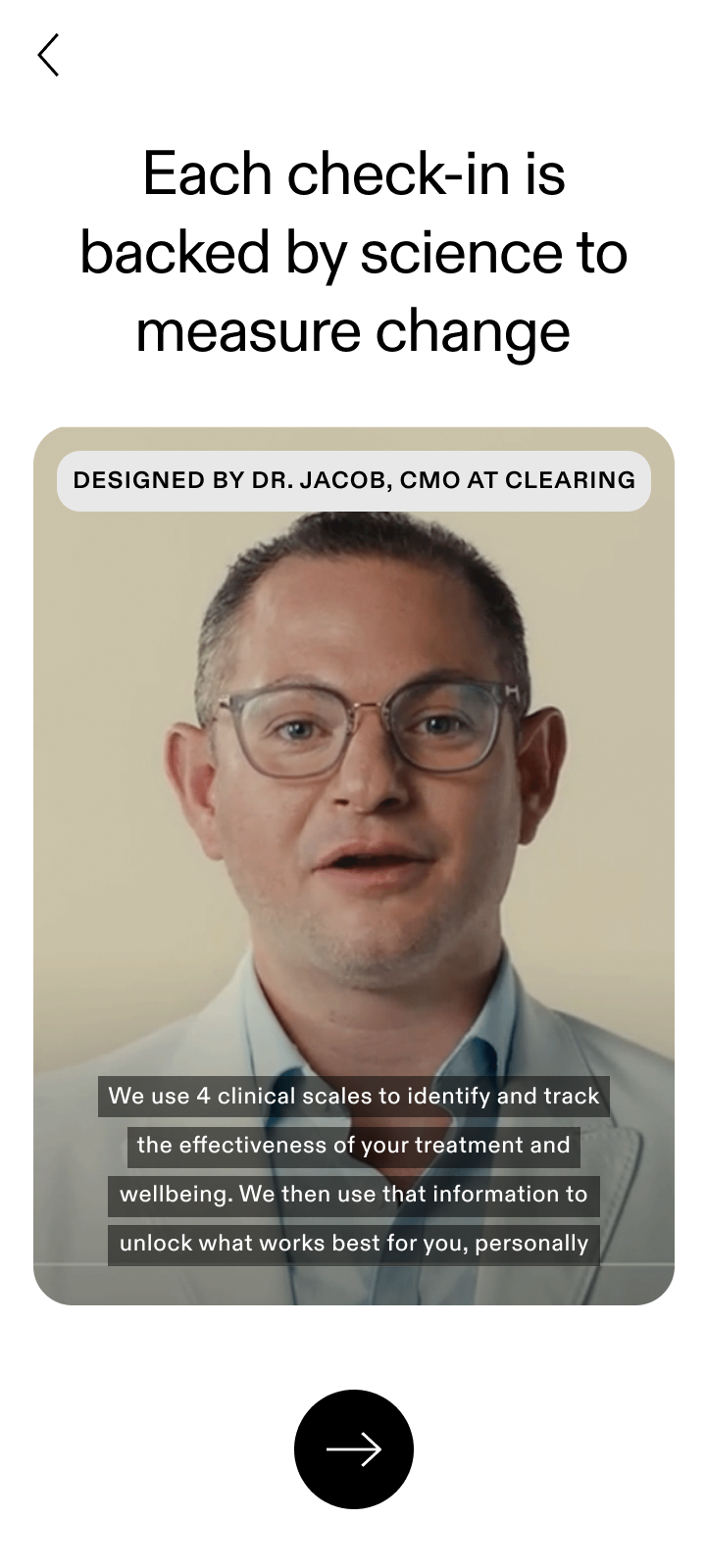
Set expectations
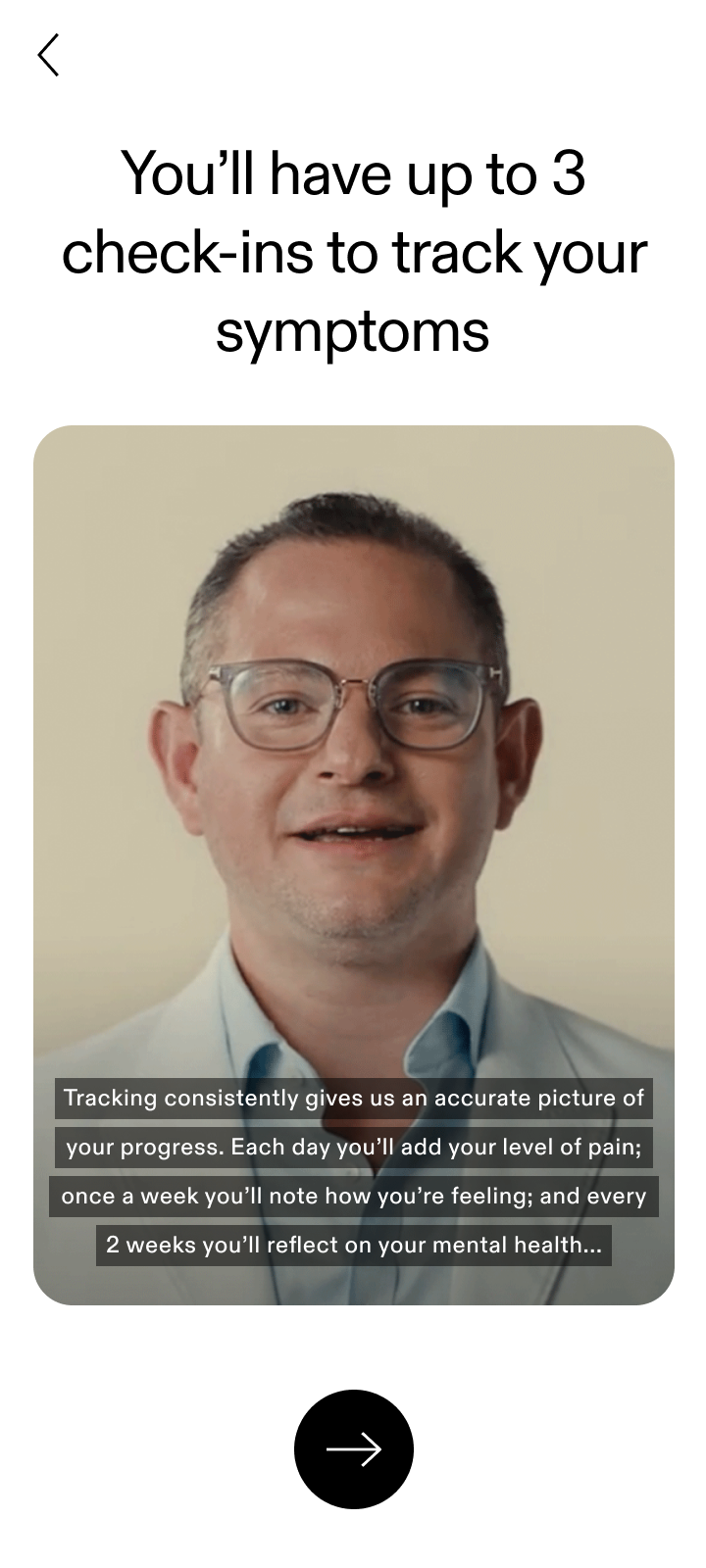
Personal connection
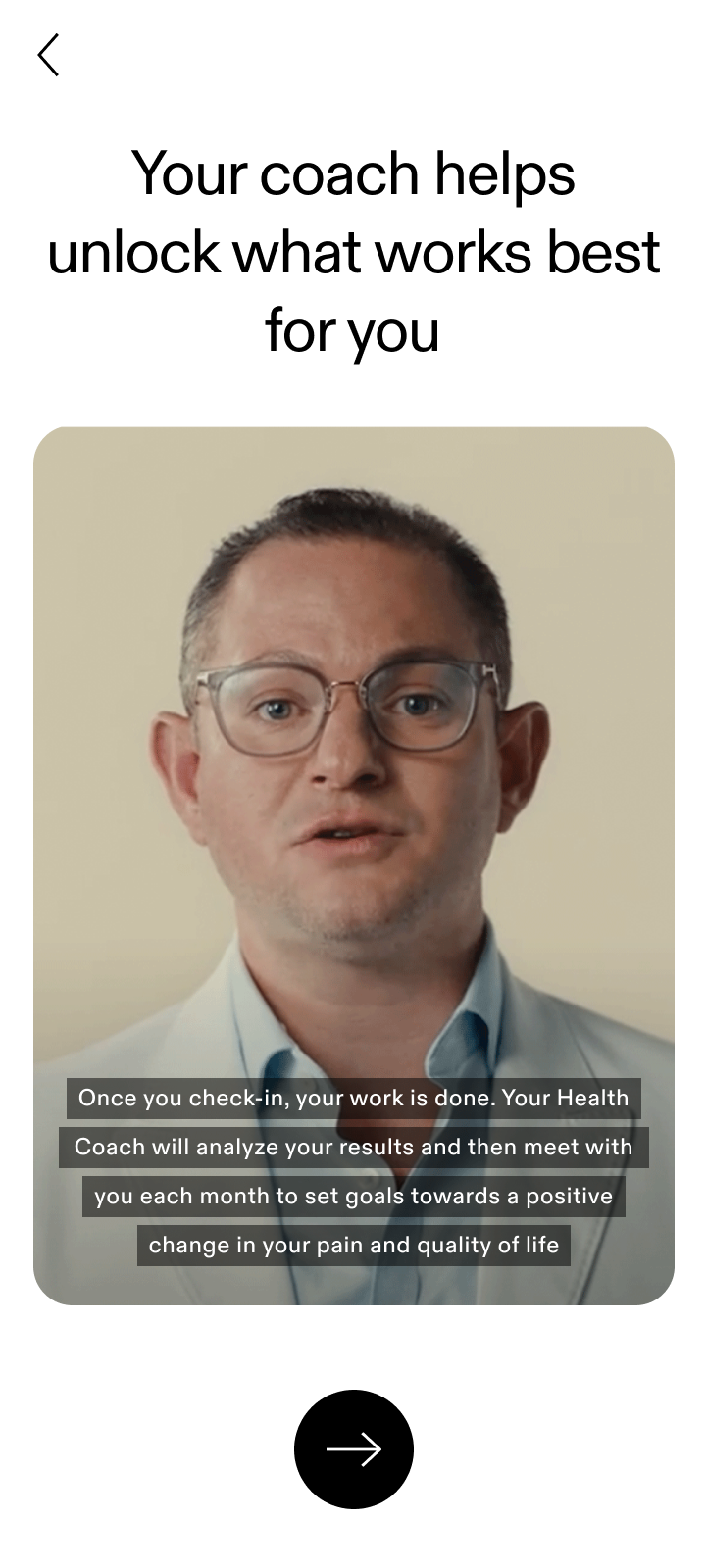
Our coaches had taught me something important: patients followed through on goals they set themselves. These self-directed goals felt achievable and gave patients personal ownership. By adding a goal-setting screen at the end, patients could customize their check-in frequency based on their own assessment of what they could commit to, rather than having a one-size-fits-all approach imposed on them.
Set expectations

Show clinical validation
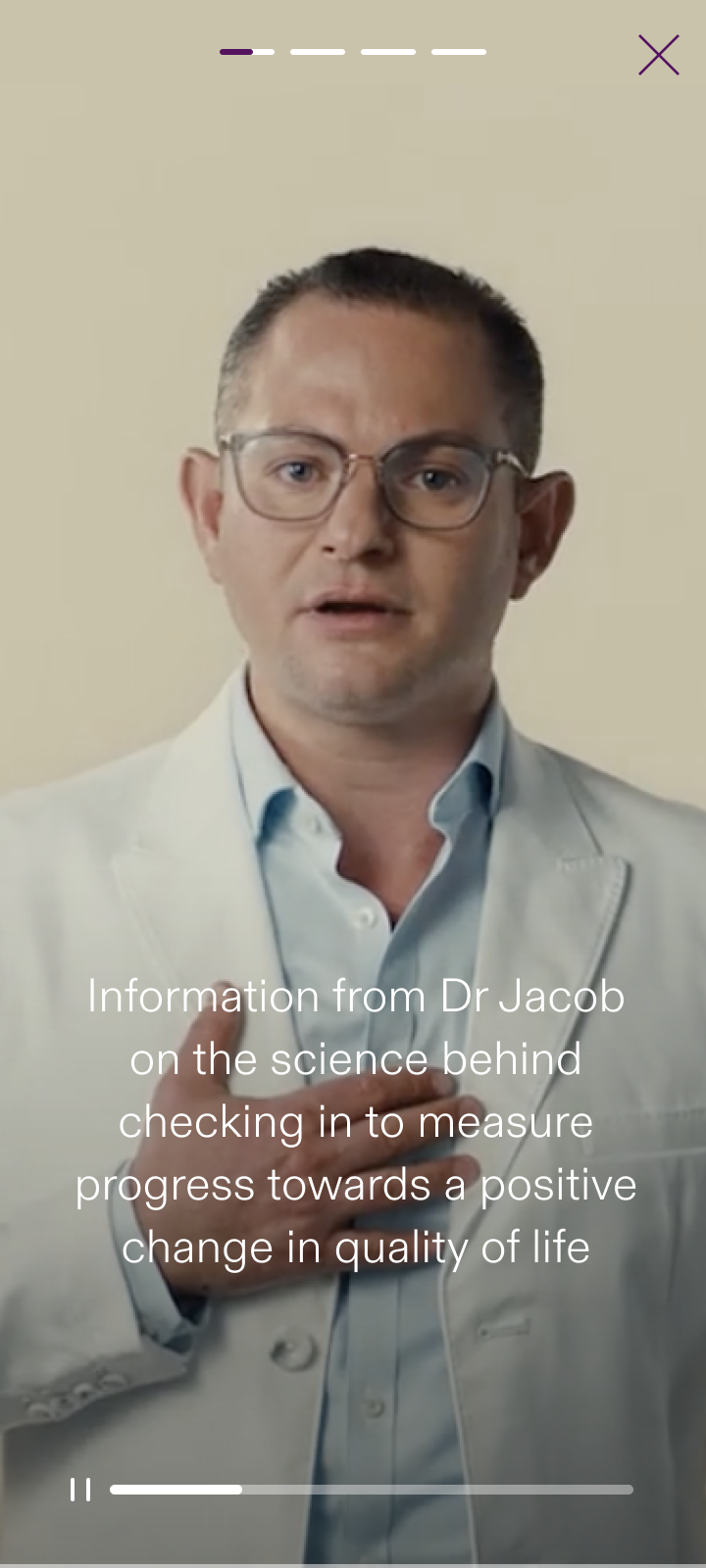
Personal connection
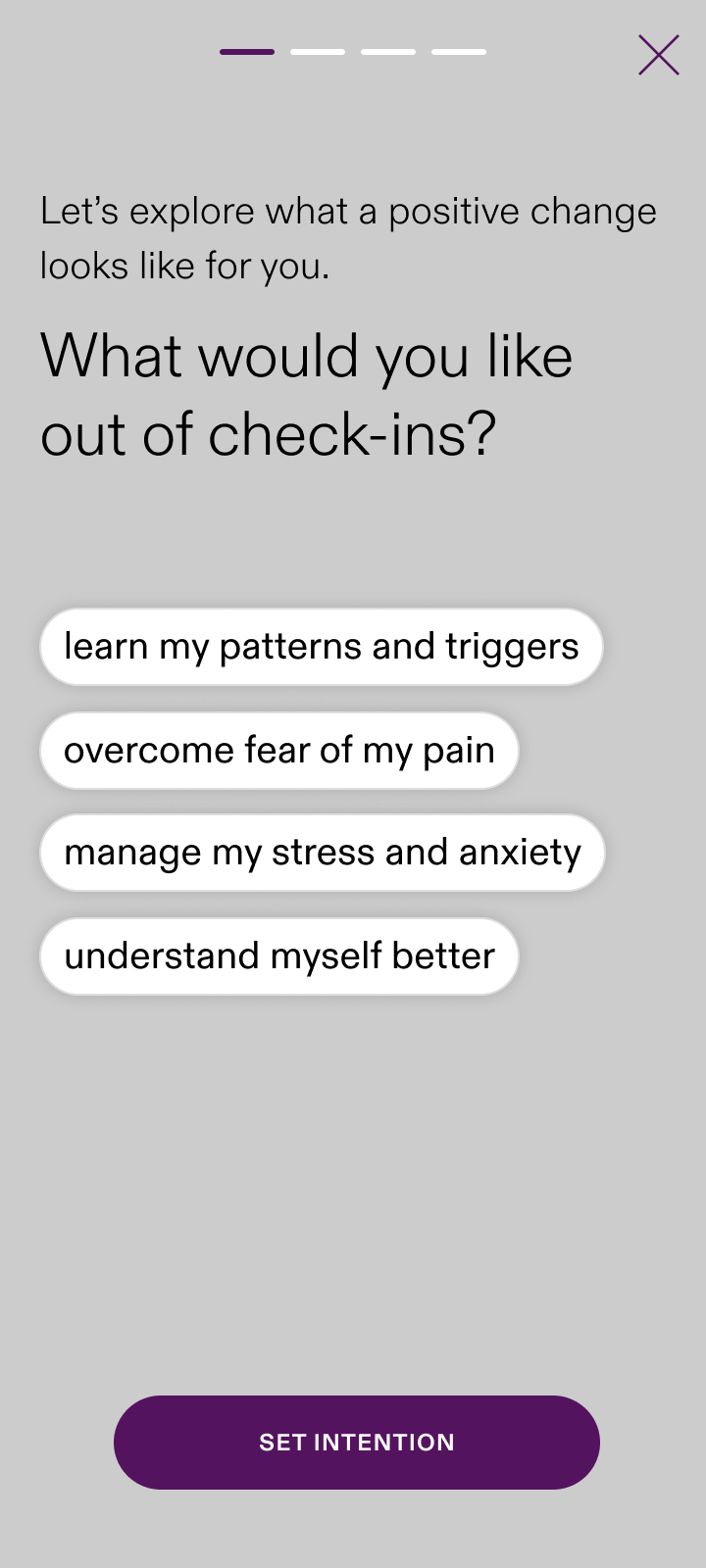
Goal setting
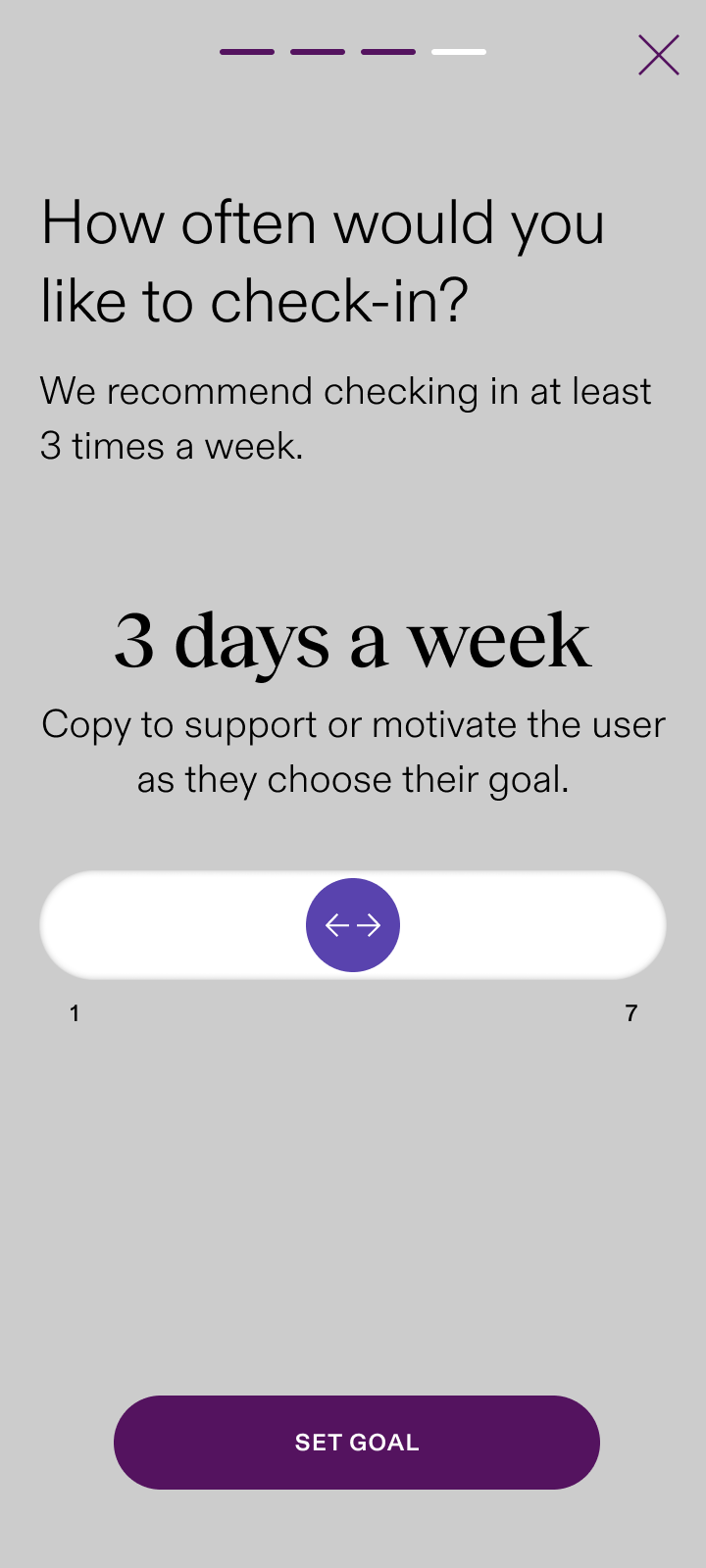
Project outcome and learnings
What I would have measured for success
Unfortunately, Clearing went under halfway through this project's development, so the final designs were never implemented. However, my research and strategic thinking provided valuable insights about our patients and behavioral design.
Primary metrics:
- Monthly check-in completion rates increasing from 23% to 80%+ by month 3
- Percentage of patients maintaining RTM compliance (16+ monthly check-ins)
- Time-to-first-check-in after onboarding completion
Secondary metrics:
- Patient satisfaction scores related to motivation and progress tracking
- Health coach feedback on patient engagement quality
- Reduction in support tickets related to finding or understanding check-ins
What I would have done differently
- Deeper accessibility research: Chronic pain patients often face mobility and cognitive challenges that I wasn’t able to validate through direct user testing. I would have gotten a test group together to go through.
- Iterative prototype testing: Given the sensitive nature of chronic pain management, I would have pushed for rapid prototyping and testing of the emotional tone and messaging, particularly around the celebration-focused progress tracking.
What I learned through the design process
Designing for a sensitive audience
Understanding the unique challenges of designing for chronic pain patients, including trust-building, accessibility, and motivation without condescension.
Strategic thinking under constraints
How to balance business requirements (RTM billing), user needs (accessible care), stakeholder needs (competing priorities) and behavioral psychology principles within tight timelines.
Building upon research
The ability to synthesize insights from multiple research streams (competitor analysis, patient community feedback, health coach interviews, and patient pain points) to create comprehensive user understanding.
SAM
MURPHY
DESIGN
SAM
MURPHY
DESIGN
CLEARING 2023
Maintaining free care with check-ins
Improving patient engagement for Clearing's chronic pain management app



ROLE
Lead Product Designer, responsible for discovery, stakeholder collaboration, strategy, and UX.
GOAL
To help patients understand the value of tracking their pain and increase daily check-ins to 16 x per month to meet RTM goals
OUTCOME
Learned a lot about behavior change and implemented a strategy that could scale from MVP and beyond
Clearing was a chronic pain care company that helped people manage their chronic pain without opioids. The mission centered on whole-body care, helping patients through physical, psychological, and lifestyle interventions rather than pharmaceutical dependency.
The critical business challenge
Patients needed to complete at least 16 check-ins per month for us to bill insurance under Remote Therapeutic Monitoring (RTM) codes. Without RTM billing:
- The business wouldn’t be able to collect payment from insurance companies to cover care
- Patients would face subscription costs, which we knew they already couldn’t afford (check out my Continuous Care project)
- Patients could lose access to virtual pain management, when in-person options required a day-long trip
100%
Day 1
75%
Day 3
48%
Day 7
23%
Day 15
<1%
Day 30
Post app launch, engagement plummeted to 23%, yet we needed 16 check-ins from patients to offer low-cost, quality care.
We needed a solution yesterday
I came up with a flexible plan to prioritize discovery from all angles. By spreading our efforts across multiple areas and leveraging existing resources, we could adapt to time constraints while covering all bases. This approach ensured we could pivot confidently, whether we had time for direct patient feedback or needed to rely solely on existing data.
Research and competitor analysis
- How are other tracking apps promoting engagement and retention?
- What strategies seem to be working for people with chronic pain?
- What is best practice for motivating behavior change?
FullStory recordings
- What aspects of the existing UX are patients clearly struggling with?
- Are there specific mobility-related challenges in the current app?
- How effective is the current check-in prompting?
Health coach recordings
- What tools do coaches use to motivate and encourage patients face-to-face?
- What messages resonate the most?
- What challenges do patients commonly face in their care journey?
Patient interviews (time-dependent)
- What motivates patients to engage with their care plan?
- What barriers do they face in consistent app usage?
- How do they perceive the value of daily check-ins?
Key research findings
Combined efforts see more success
Every habit-tracking app I analyzed used a combination of engagement techniques. I quickly realized that we would need to create multiple touch-points to keep patients engaged from the start:
- Goal setting
- Educational moments
- Data visualization
- Affirmations
- Guided exercises
- Streaks
- Rewards
- Smart reminders











Habit-tracking apps I looked at during my competitive audit
Which efforts would work best for our audience?
I looked to our Facebook community to understand how they were coping and motivating each other. There was an overwhelming response around three themes:
Positive affirmations
I am here feeling the same. You are not alone. I try to smile and make one happy moment each day. Something to think about besides
pain. You’re right many do not understand. That’s ok. We do

All you can do is take on hour at a time you’re gonna have to slow up there’s no other way.

wake up everyday with a reason to get up and have basic things you can do, if you can do more than it’s been a blessed day. no one your body like you do.

Setting small goals
I know the feeling. I’m full body RSD for 20 years. It kills us mentally some days. Remember though that you are a warrior. 🧡🧡

I do not expect a lot of myself, but try to participate with my small group of family and friends as much as I can. I like to read and am in zoom book groups so that motivates me. I also love cats and have one. It is visibly clear that I do
not walk right and I use a cane. I try to take short walks and on occasion skip the shower! Try to keep moving and don’t feel guilt about doing less! If I cannot do something, I say so.

Hugs sweetheart you are not a lone. One day at a time!!! You are beautiful

Celebrating wins
I am coming to terms with the fact that I cannot DO much for them but I am not a human doing, I am a human being and sometimes my being there, (often right where they left me) is so much more for them. I am accessible, strong because of my journey and have a different perspective on the world. You keep up the good fight because you
have no choice my dear. You are not a shell, you are a whole person with much more depth and wisdom than before. You do as much as you can and rest is a requirement not a defeat. Be kind to yourself, be patient, loving and celebrate the
smallest of victories. I am learning to live with this broke down body that has served me well, and not be ashamed. That’s a tough one for me. Prayers for you and me and all of us!

I was in awe of the compassion and connection among the people in this community. These were people that “got it” when no one else did. I knew we couldn’t copy/paste these same tactics though.
Clearing’s health coaches confirmed our emerging patterns

Research and competitor analysis
The existing app sent a daily reminder at the same time each day. However, if patients opened the app earlier, they’d have no way of accessing Check-ins inside the app.
Patients didn’t see the value
The existing app lacked progress feedback, leaving patient inputs invalidated. However, coaches were already getting positive feedback from patients on the insights, advice, and encouragement they provided in sessions.
Patients were not on their phone often
Patients shared that they often left their phone in another room or only checked them occasionally, making it easy to miss time-sensitive notifications.
Patients could commit to small goals
Coaches motivated patients by having them commit to a small goal, of their choosing, each month. This empowered patients, making them feel in control and more dedicated as they were working towards their own goal.
My design strategy
Behavior is powerfully influenced by our emotions, identity, and environment, as well as how options are presented to us.

One of three check-ins prompted to users
Align incentives with behavior
If we wanted patients to check in more, we needed to give them a reason to come back. They’d bounced between dismissive doctors and pushed into dangerous treatments.
Patients were understandably skeptical of every new approach. They needed to see real progress to believe in something.
The design challenge: Progress with chronic pain is slow and full of ups and downs. How could I create an experience that motivated them to engage while we gathered data to show longer term progress?
Planning our MVP approach
Based on discovery, I proposed an MVP solution centered on three key aspects: feedback, discoverability, and understanding. This would not only set our patients up for success but also lay the groundwork for future feature enhancements.

Next, I collaborated with my PM to come up with a user journey that focused on the three tactics we agreed upon with stakeholders.
1
Home screen
Featuring Check-ins on the home screen would improve their discoverability and allow users to access them on their own time
2
Daily progress
Implementing a streak-based system to visually represent consistency would motivate patients by highlighting their dedication to their goals
3
Intro experience
Guiding patients through their first Check-in and providing context would demonstrate value and encourage engagement

3
2
1
Solving discoverability on the home screen
Key questions I addressed
- The existing home screen was organized with the most important action at the top: scheduling doctor/coach visits. But once a patient completed that task, did the module still need to sit at the top? Could it collapse?
- How did Check-ins rank against the other daily tasks? How did they rank against the rest of the info on the screen?
- The existing daily care program consisted of tasks patients needed to complete. Did it make more sense for Check-ins to live within their daily care program or on their own?
Original home screen doctor module
I created a dynamic module that would adapt based on status. While this would deviate from our existing checklist framework, it offered the flexibility we needed.
Module design considerations
- Always-on: The module would act as a 'nudge' that would help improve discoverability
- More real-estate: A module provided more space to utilize behavior change tools like streaks and affirmations
- Changing learned behavior: While this shifted behavior away from the established daily care program, the critical business need for RTM compliance justified giving check-ins greater visual prominence and hierarchy
My decision to shift from traditional progress tracking to a celebration-focused design came from a critical user insight — our patients didn't need reminders of what they missed when some days, they couldn't even get out of bed.
Positive motivation through daily progress

Duolingo was the first app I (and many coworkers) thought of for habit-building. But the more I dug into the psychology behind streaks, I realized they might do more harm than good for our patients.
Unlike a language learning app where small guilt trips can be motivating, people in chronic pain were dealing with:
- Physical limitations that varied day-to-day
- Pain flare-ups and emotional challenges that affected their ability to engage
- Medical appointments that disrupted routines
This led me to reimagine streaks, focusing solely on positive reinforcement rather than loss aversion. Our system would:
Celebrate all days of engagement in a week
Focus on progress, not perfection
Never penalize missed days
Acknowledge the realities of chronic pain
Building trust through an intro experience




Patients were prompted with the existing Check-in experience when they opened the app
Unlike other features in our app, Check-ins lacked an introduction. Patients weren't clear on why we were asking for this information or how it would benefit them. We needed to create an onboarding experience that would clearly establish trust, demonstrate value, and help users personalize the feature to their needs.
User research revealed that patients trusted something scientifically proven, even without understanding the complex details. Rather than going into detailed explanations of the three clinical scales (GAD, PHQ, and PGIC) we used for Check-ins, I proposed leveraging our CMO, Dr. Jacob instead, who was already trusted by our patient community.
Wireframe explorations
Show clinical validation

Set expectations

Personal connection

Our coaches had taught me something important: patients followed through on goals they set themselves. These self-directed goals felt achievable and gave patients personal ownership. By adding a goal-setting screen at the end, patients could customize their check-in frequency based on their own assessment of what they could commit to, rather than having a one-size-fits-all approach imposed on them.
Set expectations

Show clinical validation

Personal connection

Goal setting

Project outcome and learnings
What I would have measured for success
Unfortunately, Clearing went under halfway through this project's development, so the final designs were never implemented. However, my research and strategic thinking provided valuable insights about our patients and behavioral design.
Primary metrics:
- Monthly check-in completion rates increasing from 23% to 80%+ by month 3
- Percentage of patients maintaining RTM compliance (16+ monthly check-ins)
- Time-to-first-check-in after onboarding completion
Secondary metrics:
- Patient satisfaction scores related to motivation and progress tracking
- Health coach feedback on patient engagement quality
- Reduction in support tickets related to finding or understanding check-ins
What I would have done differently
- Deeper accessibility research: Chronic pain patients often face mobility and cognitive challenges that I wasn’t able to validate through direct user testing. I would have gotten a test group together to go through.
- Iterative prototype testing: Given the sensitive nature of chronic pain management, I would have pushed for rapid prototyping and testing of the emotional tone and messaging, particularly around the celebration-focused progress tracking.
What I learned through the design process
Designing for a sensitive audience
Understanding the unique challenges of designing for chronic pain patients, including trust-building, accessibility, and motivation without condescension.
Strategic thinking under constraints
How to balance business requirements (RTM billing), user needs (accessible care), stakeholder needs (competing priorities) and behavioral psychology principles within tight timelines.
Building upon research
The ability to synthesize insights from multiple research streams (competitor analysis, patient community feedback, health coach interviews, and patient pain points) to create comprehensive user understanding.
SAM
MURPHY
DESIGN
SAM
MURPHY
DESIGN
CLEARING 2023
Maintaining free care with check-ins
Improving patient engagement for Clearing's chronic pain management app



ROLE
Lead Product Designer, responsible for discovery, stakeholder collaboration, strategy, and UX.
GOAL
To help patients understand the value of tracking their pain and increase daily check-ins to 16 x per month to meet RTM goals
OUTCOME
Learned a lot about behavior change and implemented a strategy that could scale from MVP and beyond
Clearing was a chronic pain care company that helped people manage their chronic pain without opioids. The mission centered on whole-body care, helping patients through physical, psychological, and lifestyle interventions rather than pharmaceutical dependency.
The critical business challenge
Patients needed to complete at least 16 check-ins per month for us to bill insurance under Remote Therapeutic Monitoring (RTM) codes. Without RTM billing:
- The business wouldn’t be able to collect payment from insurance companies to cover care
- Patients would face subscription costs, which we knew they already couldn’t afford (check out my Continuous Care project)
- Patients could lose access to virtual pain management, when in-person options required a day-long trip
100%
Day 1
75%
Day 3
48%
Day 7
23%
Day 15
<1%
Day 30
Post app launch, engagement plummeted to 23%, yet we needed 16 check-ins from patients to offer low-cost, quality care.
We needed a solution yesterday
I came up with a flexible plan to prioritize discovery from all angles. By spreading our efforts across multiple areas and leveraging existing resources, we could adapt to time constraints while covering all bases. This approach ensured we could pivot confidently, whether we had time for direct patient feedback or needed to rely solely on existing data.
Research and competitor analysis
- How are other tracking apps promoting engagement and retention?
- What strategies seem to be working for people with chronic pain?
- What is best practice for motivating behavior change?
FullStory recordings
- What aspects of the existing UX are patients clearly struggling with?
- Are there specific mobility-related challenges in the current app?
- How effective is the current check-in prompting?
Health coach recordings
- What tools do coaches use to motivate and encourage patients face-to-face?
- What messages resonate the most?
- What challenges do patients commonly face in their care journey?
Patient interviews (time-dependent)
- What motivates patients to engage with their care plan?
- What barriers do they face in consistent app usage?
- How do they perceive the value of daily check-ins?
Key research findings
Combined efforts see more success
Every habit-tracking app I analyzed used a combination of engagement techniques. I quickly realized that we would need to create multiple touch-points to keep patients engaged from the start:
- Goal setting
- Educational moments
- Data visualization
- Affirmations
- Guided exercises
- Streaks
- Rewards
- Smart reminders











Habit-tracking apps I looked at during my competitive audit
Which efforts would work best for our audience?
I looked to our Facebook community to understand how they were coping and motivating each other. There was an overwhelming response around three themes:
Positive affirmations
I am here feeling the same. You are not alone. I try to smile and make one happy moment each day. Something to think about besides
pain. You’re right many do not understand. That’s ok. We do

All you can do is take on hour at a time you’re gonna have to slow up there’s no other way.

wake up everyday with a reason to get up and have basic things you can do, if you can do more than it’s been a blessed day. no one your body like you do.

Setting small goals
I know the feeling. I’m full body RSD for 20 years. It kills us mentally some days. Remember though that you are a warrior. 🧡🧡

I do not expect a lot of myself, but try to participate with my small group of family and friends as much as I can. I like to read and am in zoom book groups so that motivates me. I also love cats and have one. It is visibly clear that I do
not walk right and I use a cane. I try to take short walks and on occasion skip the shower! Try to keep moving and don’t feel guilt about doing less! If I cannot do something, I say so.

Hugs sweetheart you are not a lone. One day at a time!!! You are beautiful

Celebrating wins
I am coming to terms with the fact that I cannot DO much for them but I am not a human doing, I am a human being and sometimes my being there, (often right where they left me) is so much more for them. I am accessible, strong because of my journey and have a different perspective on the world. You keep up the good fight because you
have no choice my dear. You are not a shell, you are a whole person with much more depth and wisdom than before. You do as much as you can and rest is a requirement not a defeat. Be kind to yourself, be patient, loving and celebrate the
smallest of victories. I am learning to live with this broke down body that has served me well, and not be ashamed. That’s a tough one for me. Prayers for you and me and all of us!

I was in awe of the compassion and connection among the people in this community. I knew we couldn’t copy/paste these same tactics though. These were people that “got it” when no one else did. I needed to make sure we weren’t crossing the fine line from motivating to condescending.
Clearing’s health coaches confirmed our emerging patterns

Patients couldn’t find their Check-ins
The existing app sent a daily reminder at the same time each day. However, if patients opened the app earlier, they’d have no way of accessing Check-ins inside the app.
Patients didn’t see the value
The existing app lacked progress feedback, leaving patient inputs invalidated. However, coaches were already getting positive feedback from patients on the insights, advice, and encouragement they provided in sessions.
Patients were not on their phone often
Patients shared that they often left their phone in another room or only checked them occasionally, making it easy to miss time-sensitive notifications.
Patients could commit to small goals
Coaches motivated patients by having them commit to a small goal, of their choosing, each month. This empowered patients, making them feel in control and more dedicated as they were working towards their own goal.
My design strategy
Behavior is powerfully influenced by our emotions, identity, and environment, as well as how options are presented to us.

One of three check-ins prompted to users
Align incentives with behavior
If we wanted patients to check in more, we needed to give them a reason to come back. They’d bounced between dismissive doctors and pushed into dangerous treatments.
Patients were understandably skeptical of every new approach. They needed to see real progress to believe in something.
The design challenge: Progress with chronic pain is slow and full of ups and downs. How could I create an experience that motivated them to engage while we gathered data to show longer term progress?
Planning our MVP approach
Based on discovery, I proposed an MVP solution centered on three key aspects: feedback, discoverability, and understanding. This would not only set our patients up for success but also lay the groundwork for future feature enhancements.

Next, I collaborated with my PM to come up with a user journey that focused on the three tactics we agreed upon with stakeholders.
1
Home screen
Featuring Check-ins on the home screen would improve their discoverability and allow users to access them on their own time
2
Daily progress
Implementing a streak-based system to visually represent consistency would motivate patients by highlighting their dedication to their goals
3
Intro experience
Guiding patients through their first Check-in and providing context would demonstrate value and encourage engagement

3
2
1
Solving discoverability on the home screen
Key questions I addressed
- The existing home screen was organized with the most important action at the top: scheduling doctor/coach visits. But once a patient completed that task, did the module still need to sit at the top? Could it collapse?
- How did Check-ins rank against the other daily tasks? How did they rank against the rest of the info on the screen?
- The existing daily care program consisted of tasks patients needed to complete. Did it make more sense for Check-ins to live within their daily care program or on their own?
Original home screen doctor module
I created a dynamic module that would adapt based on status. While this would deviate from our existing checklist framework, it offered the flexibility we needed.
Module design considerations
- Always-on: The module would act as a 'nudge' that would help improve discoverability
- More real-estate: A module provided more space to utilize behavior change tools like streaks and affirmations
- Changing learned behavior: While this shifted behavior away from the established daily care program, the critical business need for RTM compliance justified giving check-ins greater visual prominence and hierarchy
My decision to shift from traditional progress tracking to a celebration-focused design came from a critical user insight — our patients didn't need reminders of what they missed when some days, they couldn't even get out of bed.
Positive motivation through daily progress

Duolingo was the first app I (and many coworkers) thought of for habit-building. But the more I dug into the psychology behind streaks, I realized they might do more harm than good for our patients.
Unlike a language learning app where small guilt trips can be motivating, people in chronic pain were dealing with:
- Physical limitations that varied day-to-day
- Pain flare-ups and emotional challenges that affected their ability to engage
- Medical appointments that disrupted routines
This led me to reimagine streaks, focusing solely on positive reinforcement rather than loss aversion. Our system would:
Celebrate all days of engagement in a week
Focus on progress, not perfection
Never penalize missed days
Acknowledge the realities of chronic pain
Building trust through an intro experience




Patients were prompted with the existing Check-in experience when they opened the app
Unlike other features in our app, Check-ins lacked an introduction. Patients weren't clear on why we were asking for this information or how it would benefit them. We needed to create an onboarding experience that would clearly establish trust, demonstrate value, and help users personalize the feature to their needs.
User research revealed that patients trusted something scientifically proven, even without understanding the complex details. Rather than going into detailed explanations of the three clinical scales (GAD, PHQ, and PGIC) we used for Check-ins, I proposed leveraging our CMO, Dr. Jacob instead, who was already trusted by our patient community.
Wireframe explorations
Show clinical validation

Set expectations

Personal connection

Our coaches had taught me something important: patients followed through on goals they set themselves. These self-directed goals felt achievable and gave patients personal ownership. By adding a goal-setting screen at the end, patients could customize their check-in frequency based on their own assessment of what they could commit to, rather than having a one-size-fits-all approach imposed on them.
Set expectations

Show clinical validation

Personal connection

Goal setting

Project outcome and learnings
What I would have measured for success
Unfortunately, Clearing went under halfway through this project's development, so the final designs were never implemented. However, my research and strategic thinking provided valuable insights about our patients and behavioral design.
Primary metrics:
- Monthly check-in completion rates increasing from 23% to 80%+ by month 3
- Percentage of patients maintaining RTM compliance (16+ monthly check-ins)
- Time-to-first-check-in after onboarding completion
Secondary metrics:
- Patient satisfaction scores related to motivation and progress tracking
- Health coach feedback on patient engagement quality
- Reduction in support tickets related to finding or understanding check-ins
What I would have done differently
- Iterative prototype testing: Given the sensitive nature of chronic pain management, I would have pushed for rapid prototyping and testing of the emotional tone and messaging, particularly around the celebration-focused progress tracking.
- Deeper accessibility research: Chronic pain patients often face mobility and cognitive challenges that I wasn’t able to validate through direct user testing. I would have gotten a test group together to go through the rapid prototype prior to launch.
What I learned through the design process
Designing for a sensitive audience
Understanding the unique challenges of designing for chronic pain patients, including trust-building, accessibility, and motivation without condescension.
Strategic thinking under constraints
How to balance business requirements (RTM billing), user needs (accessible care), stakeholder needs (competing priorities) and behavioral psychology principles within tight timelines.
Building upon research
The ability to synthesize insights from multiple research streams (competitor analysis, patient community feedback, health coach interviews, and patient pain points) to create comprehensive user understanding.